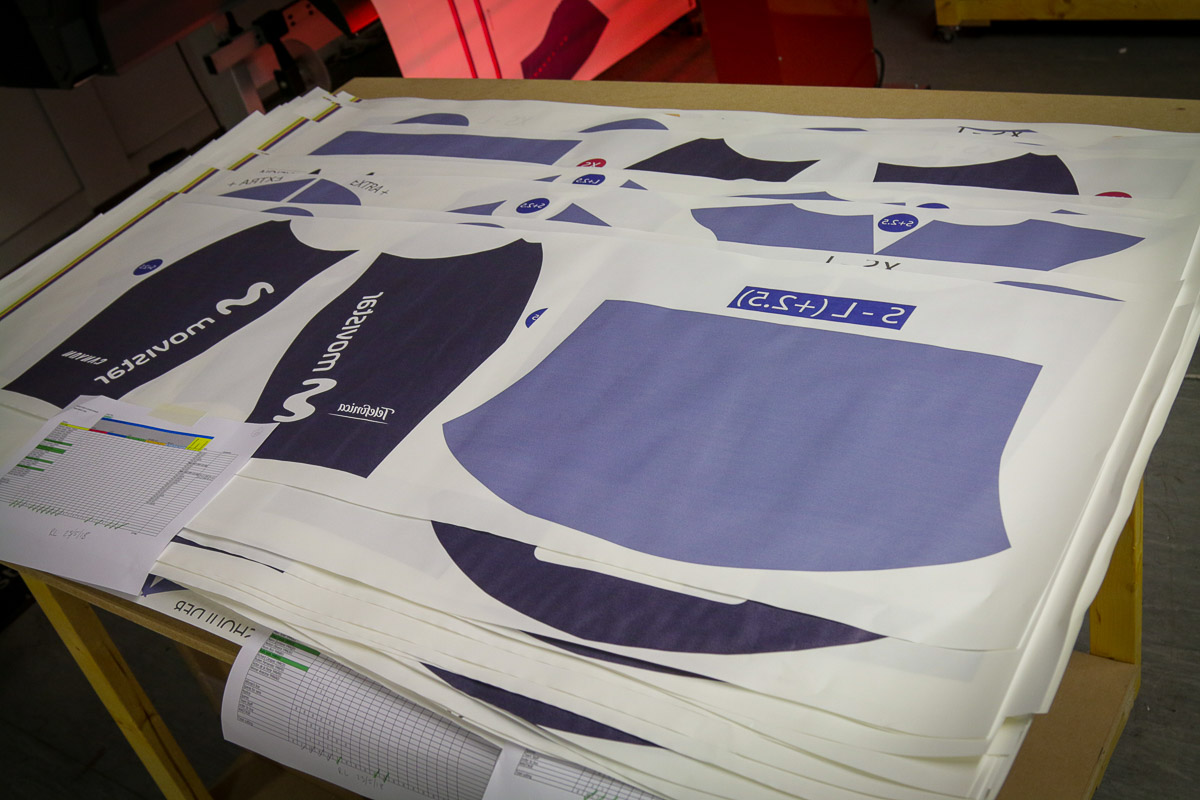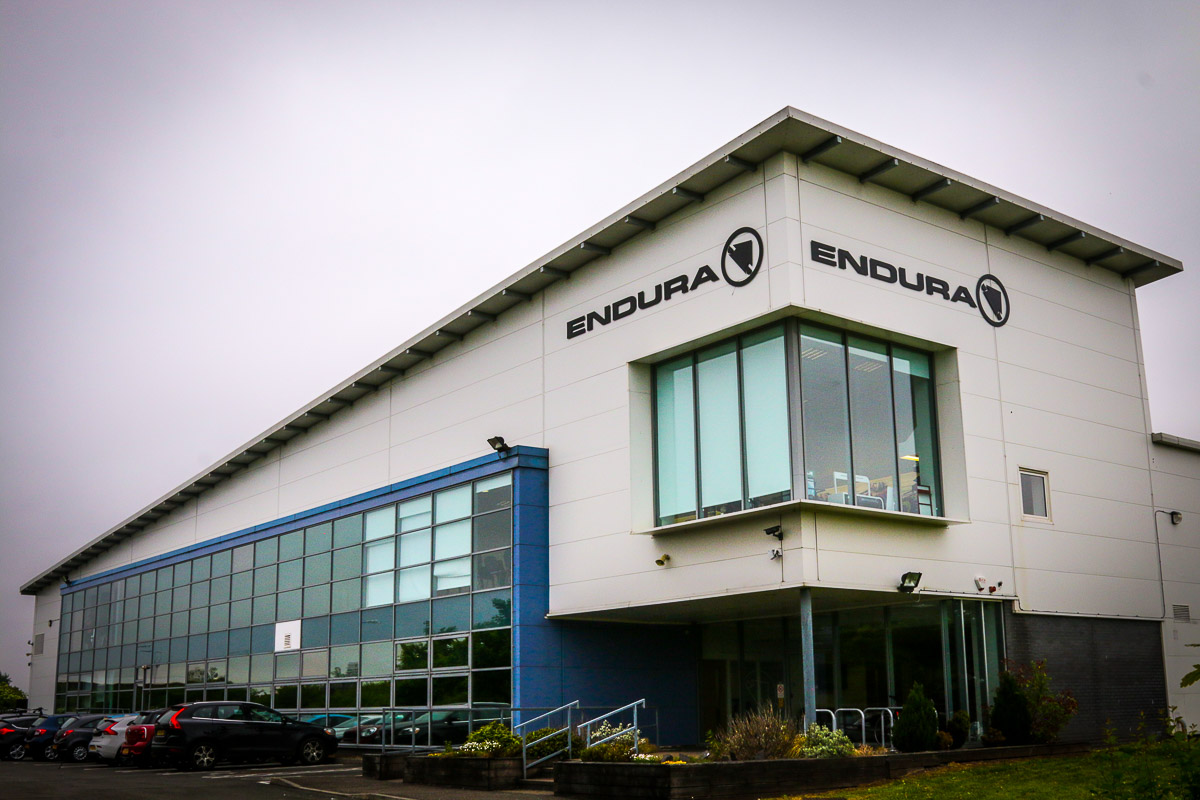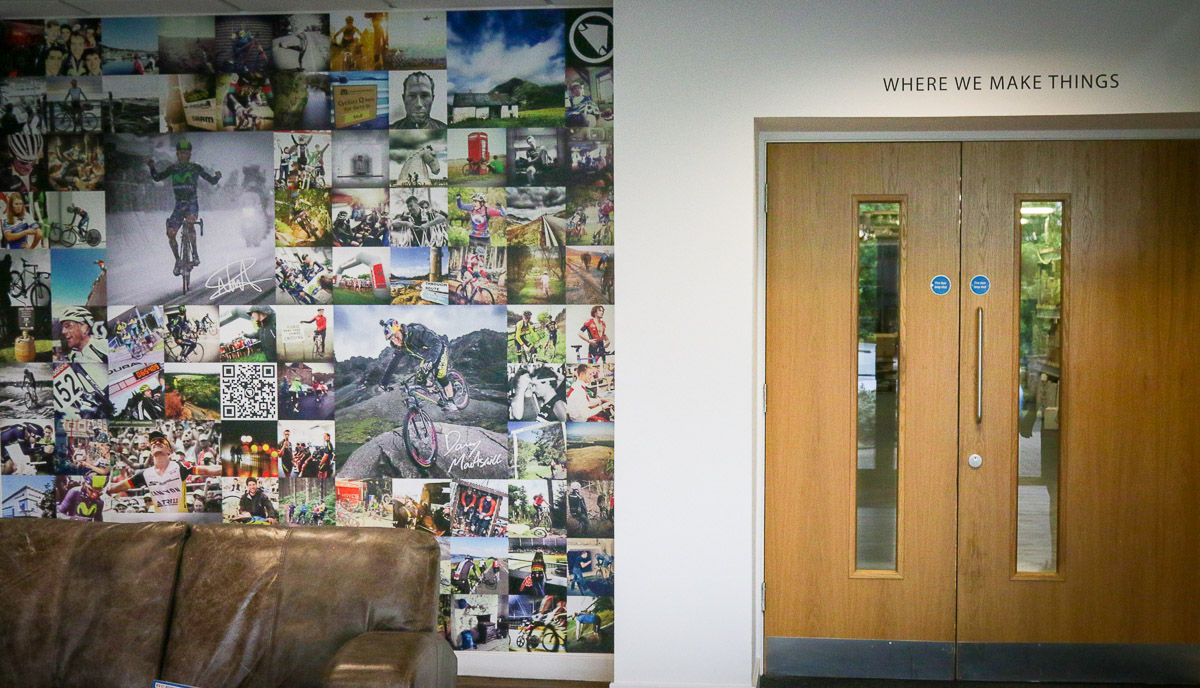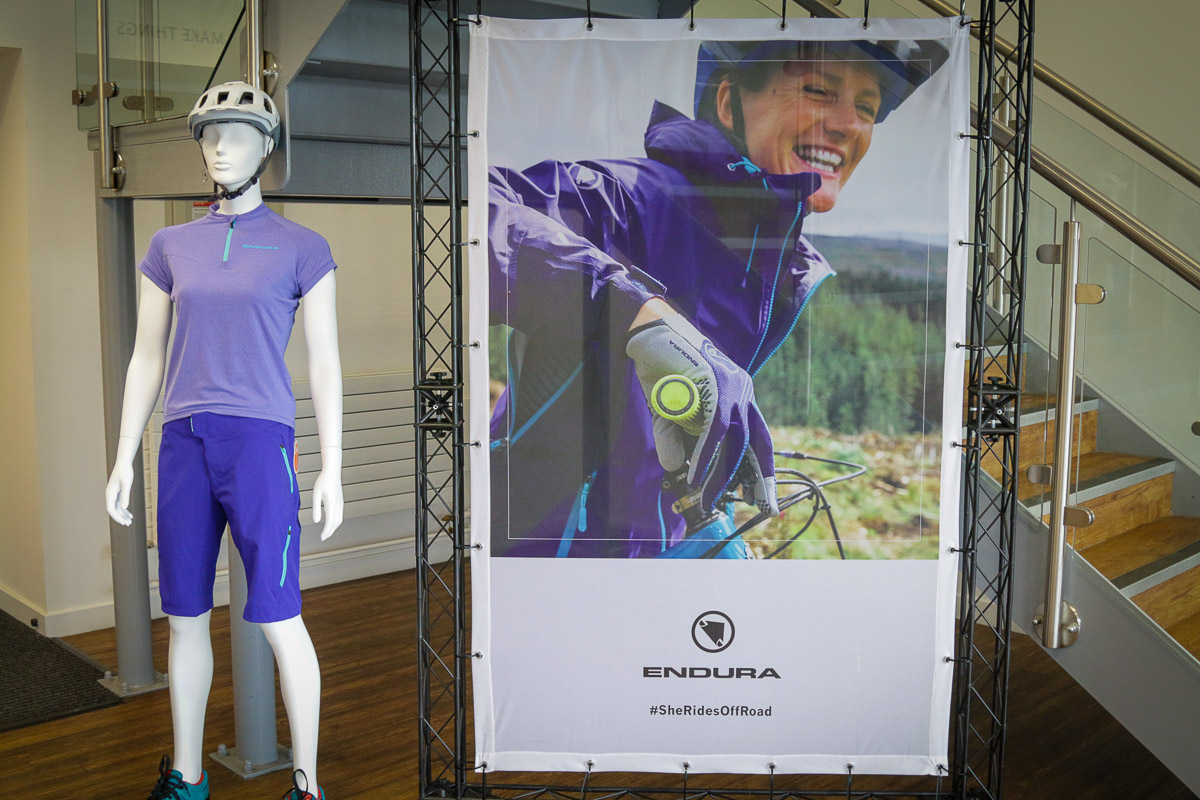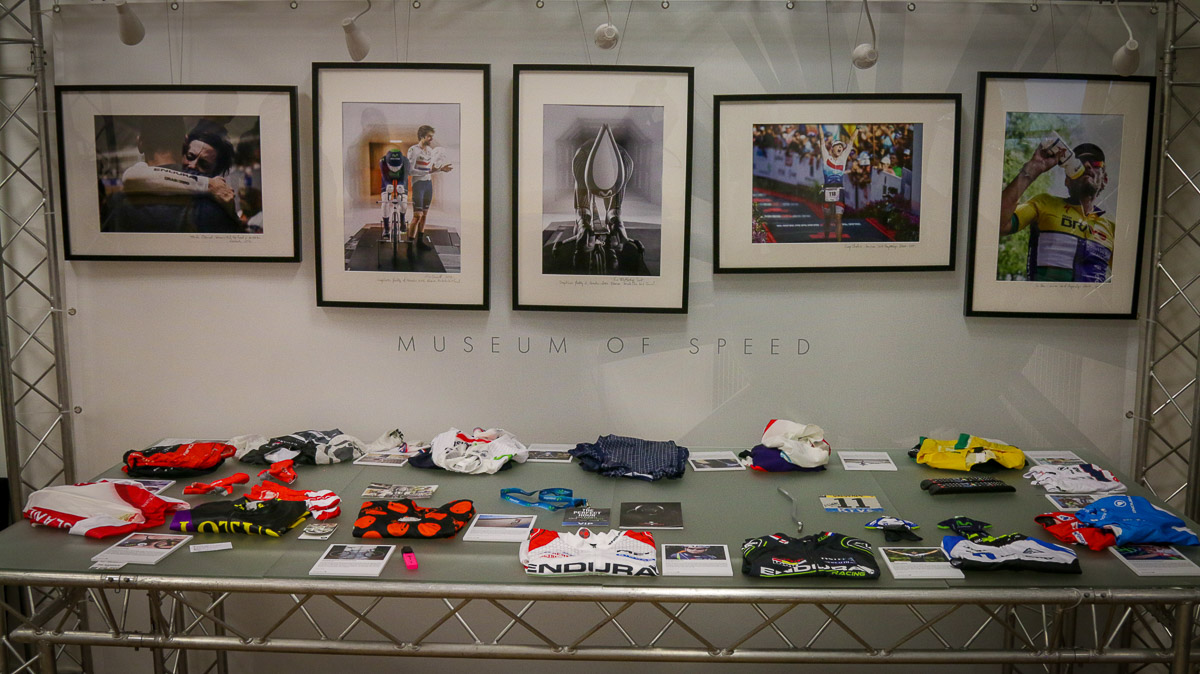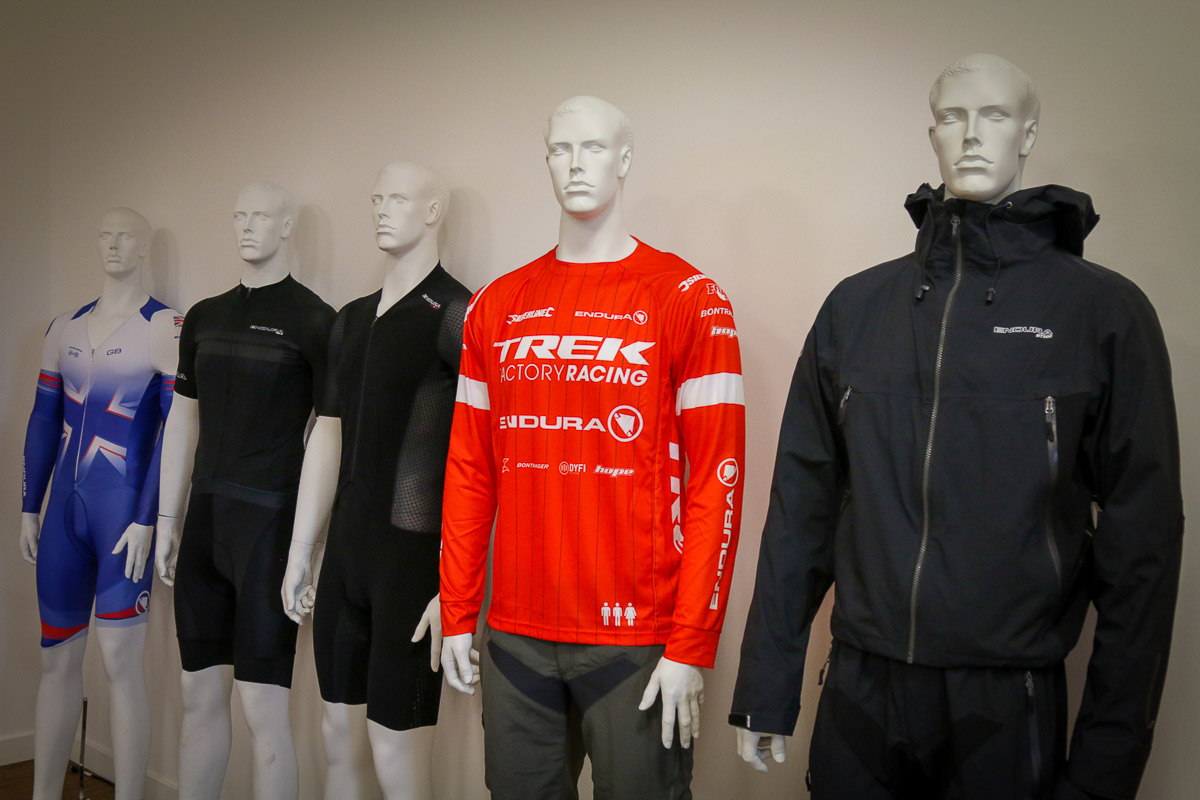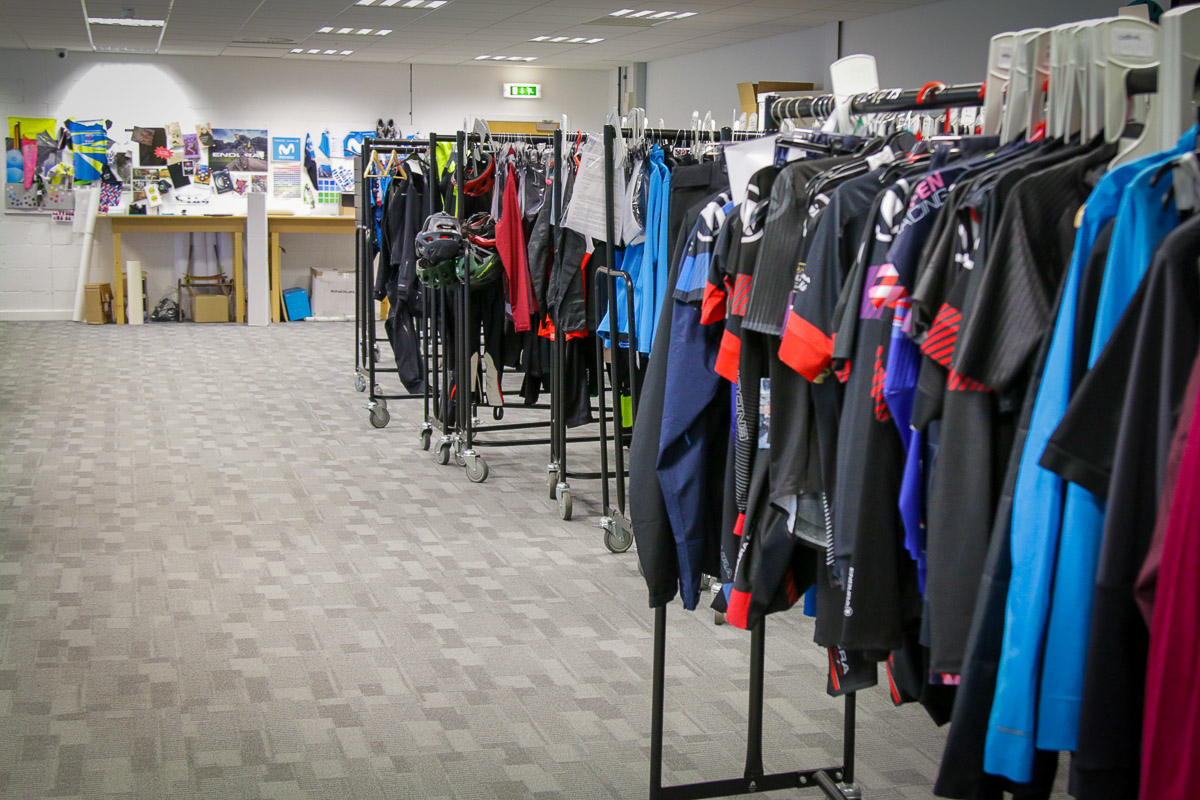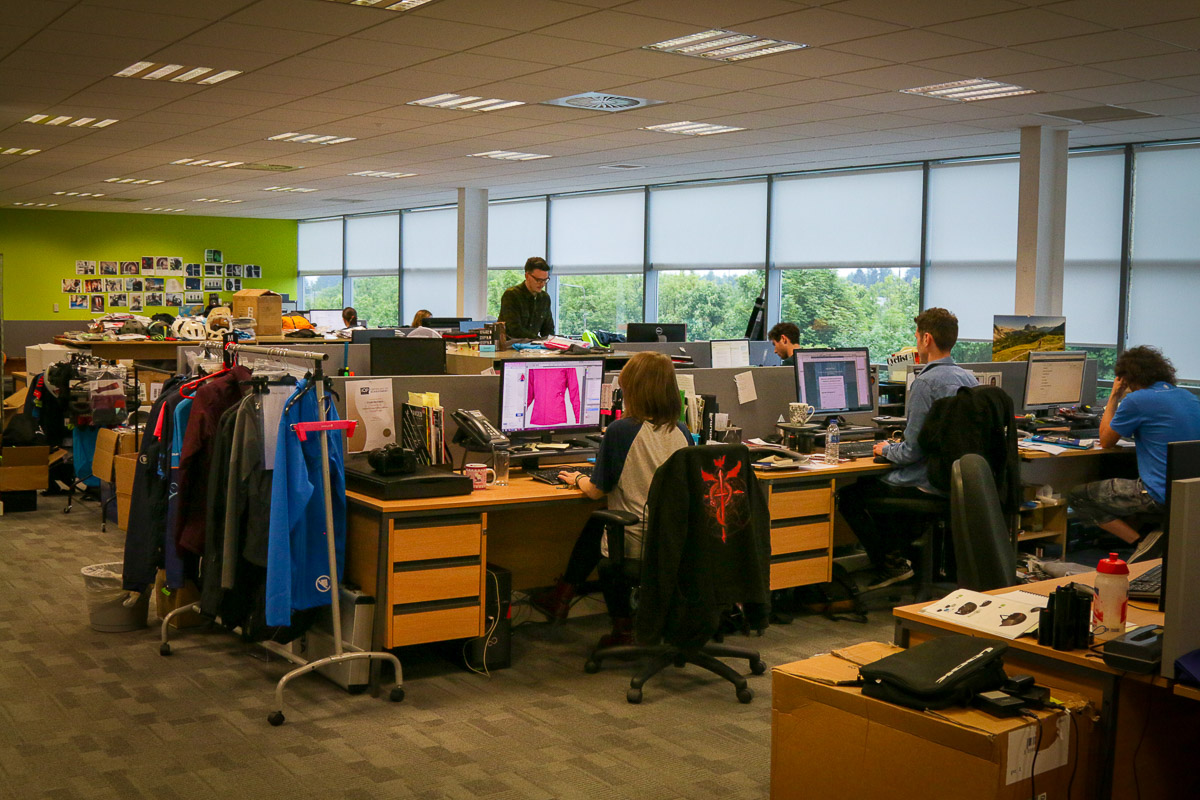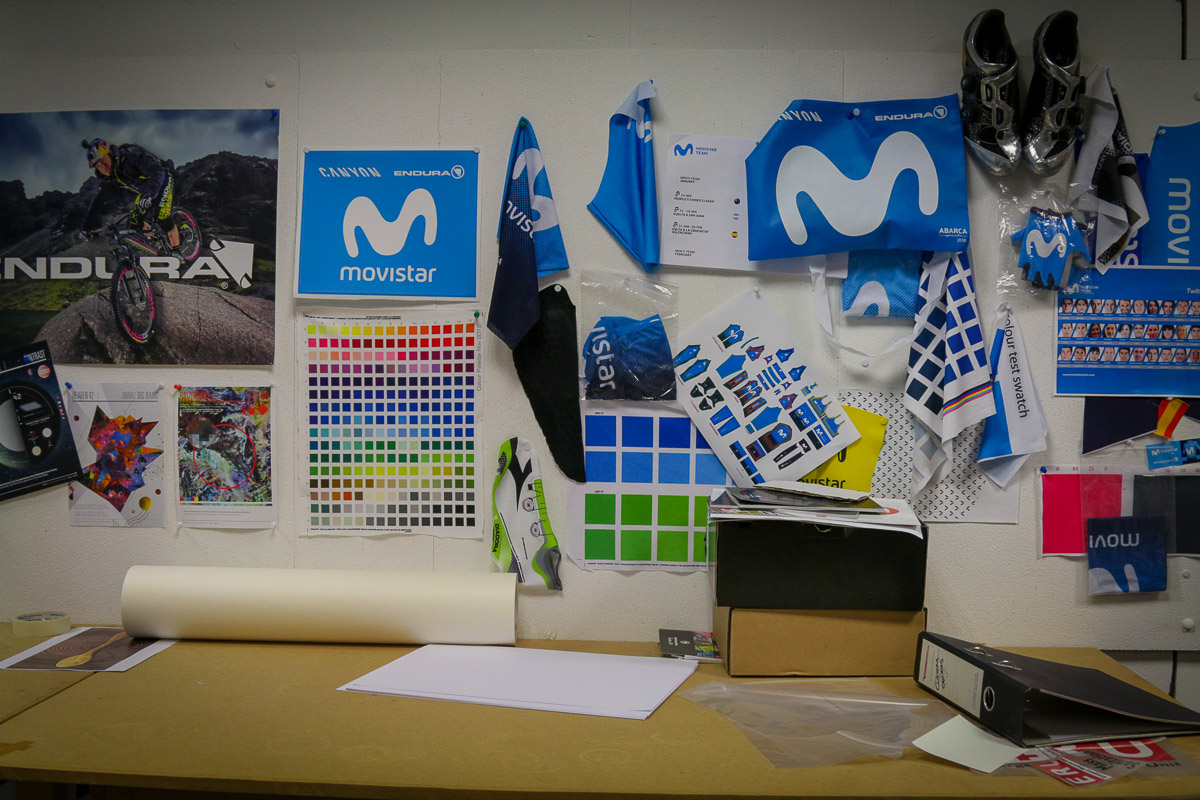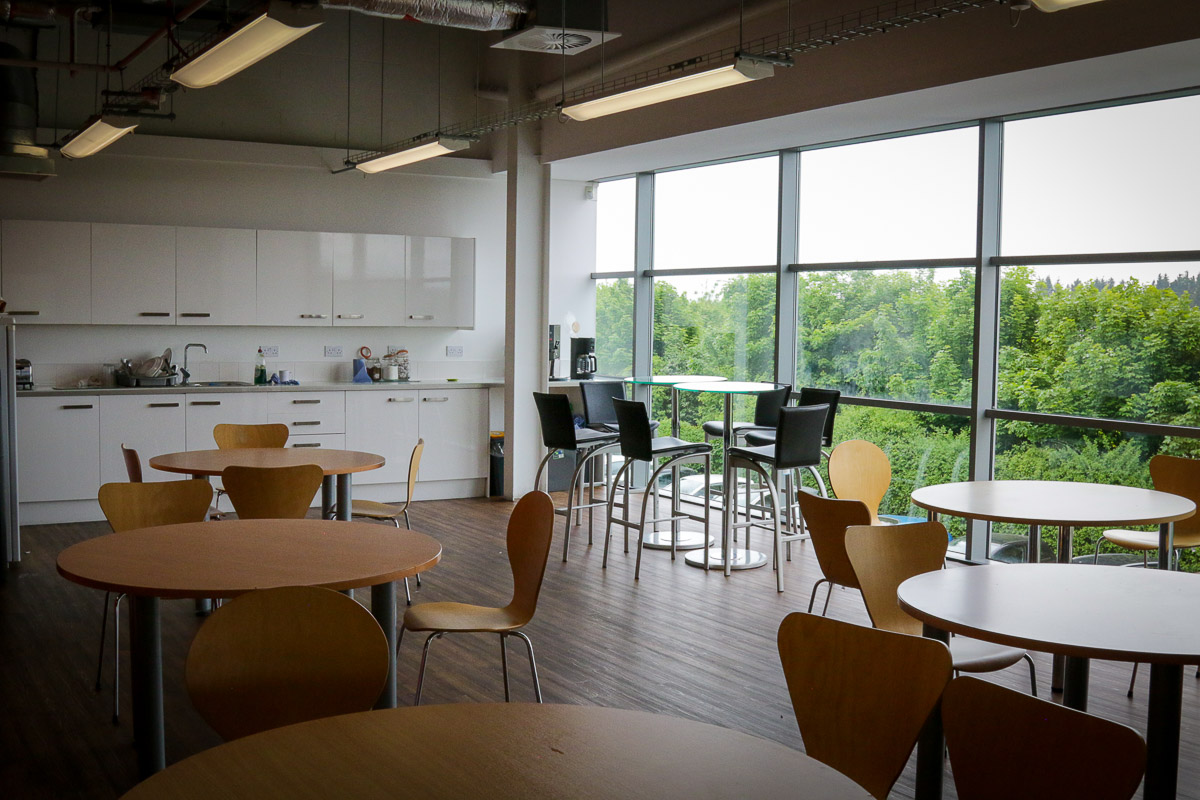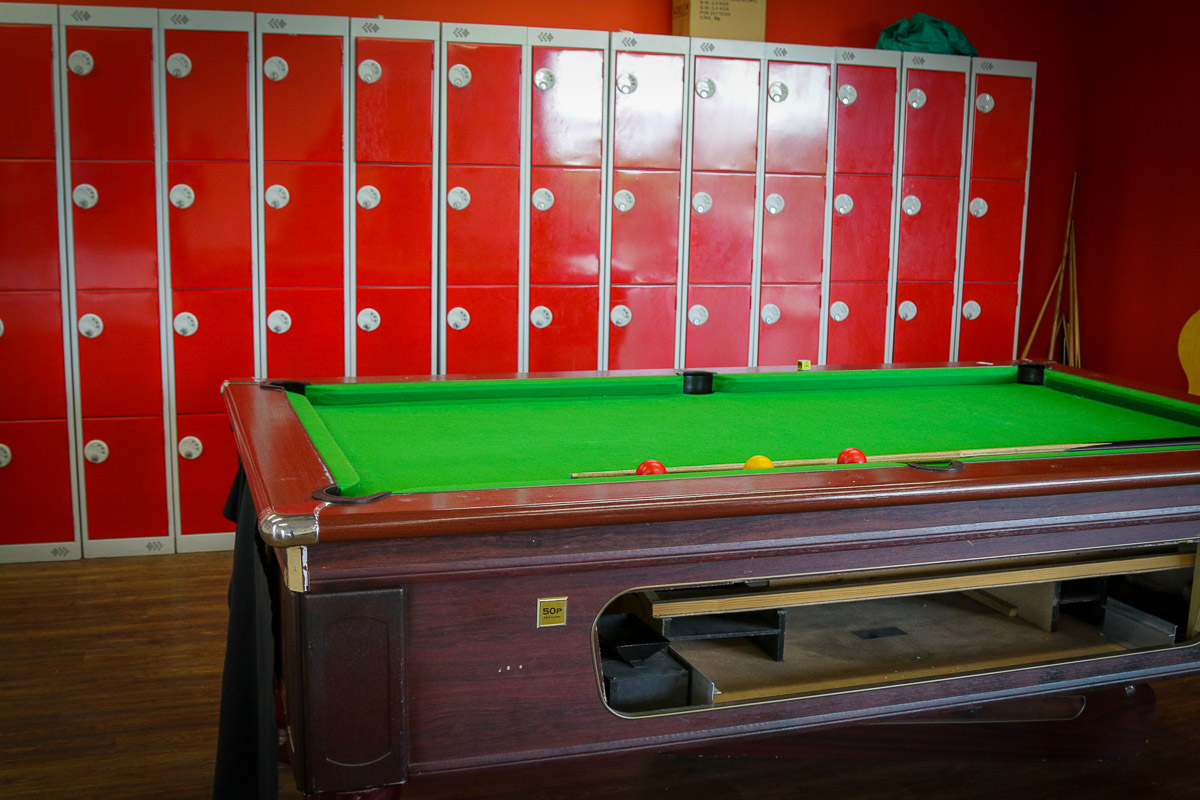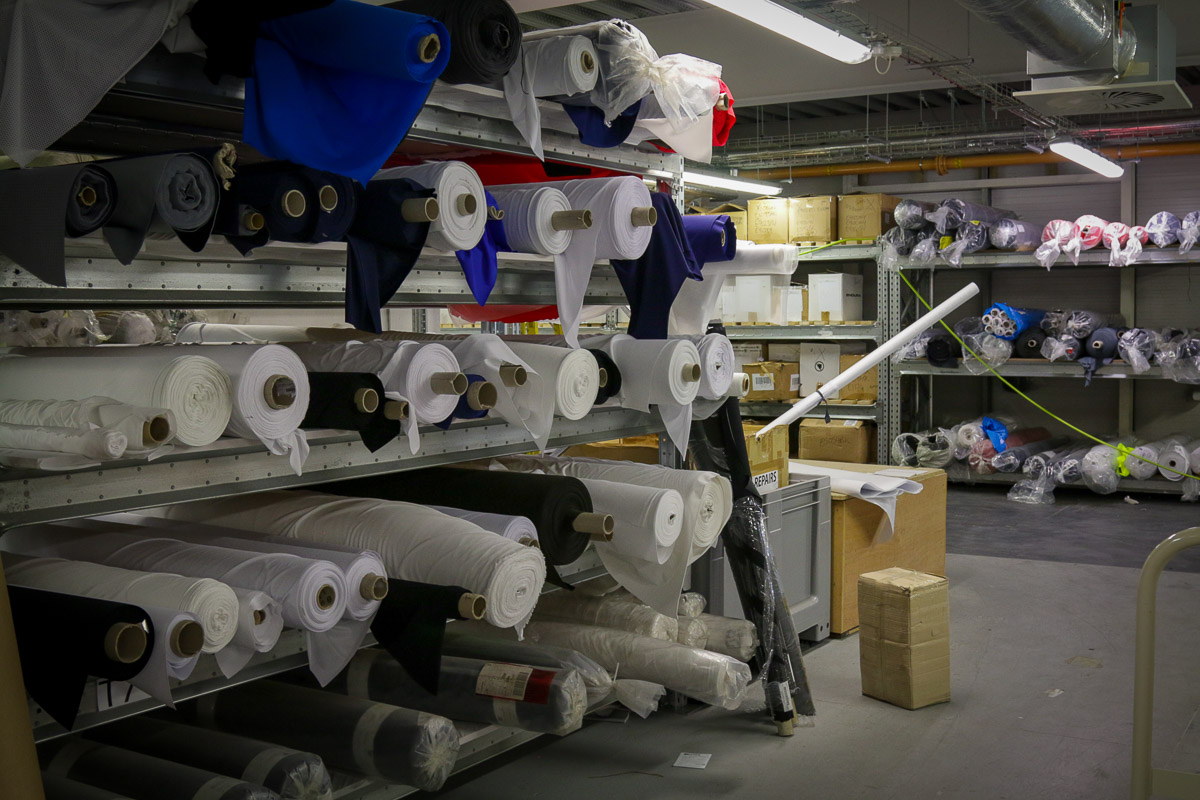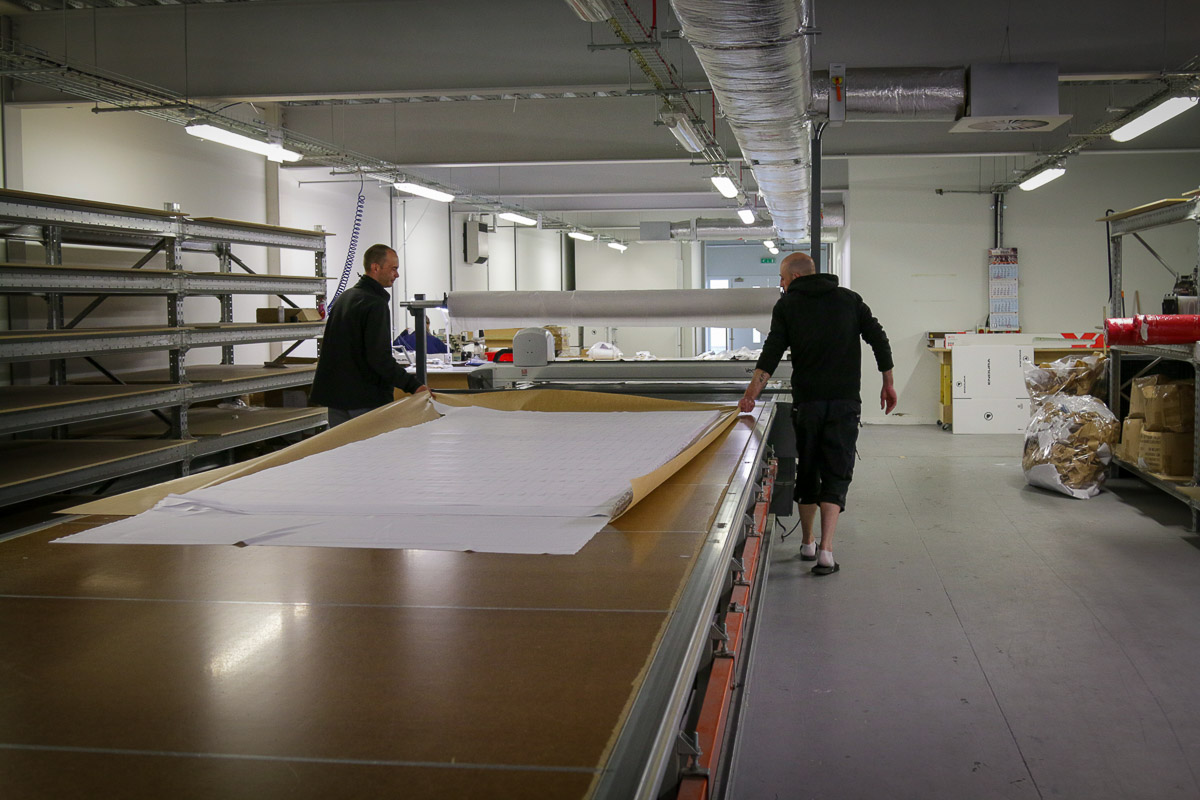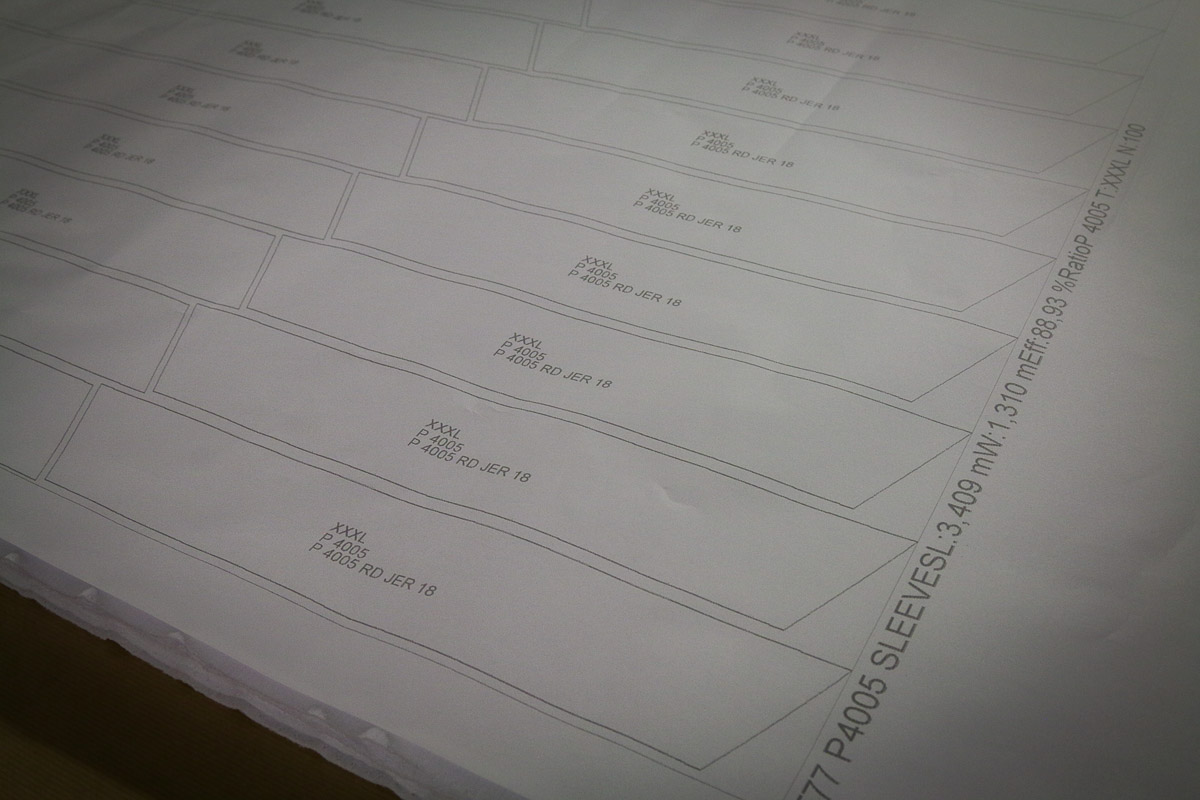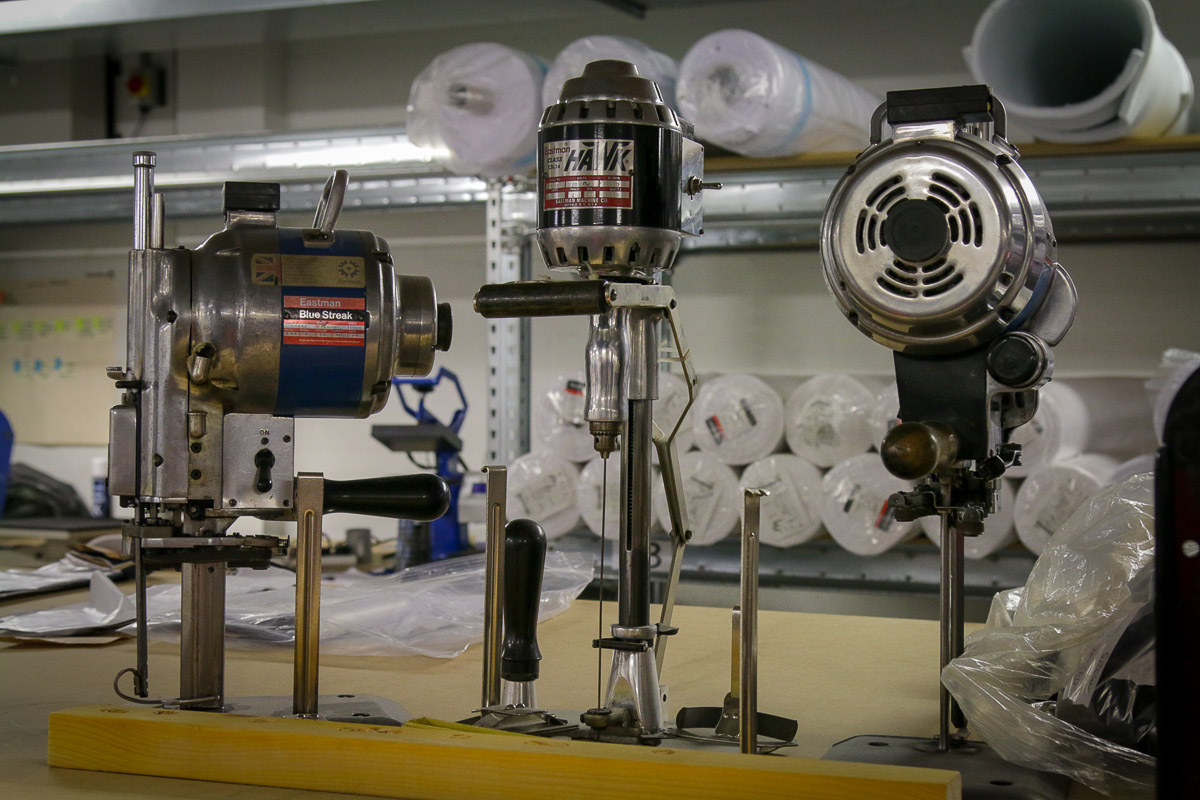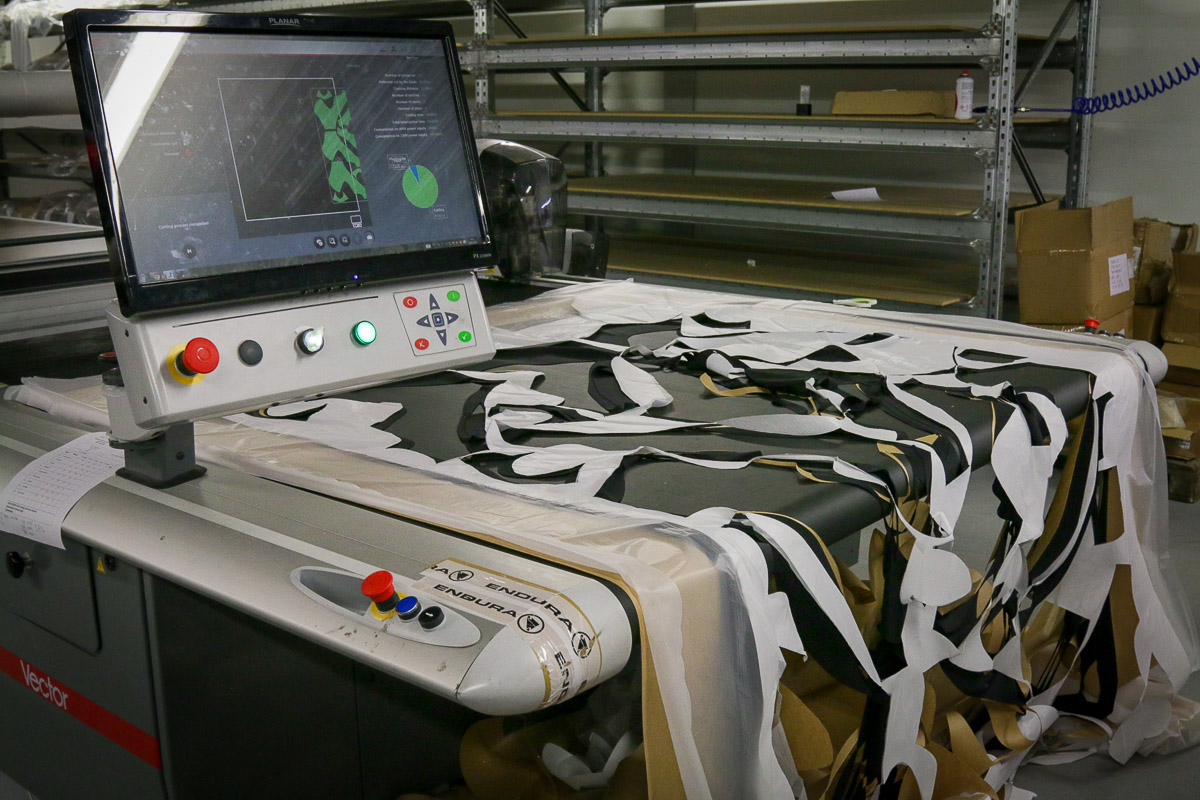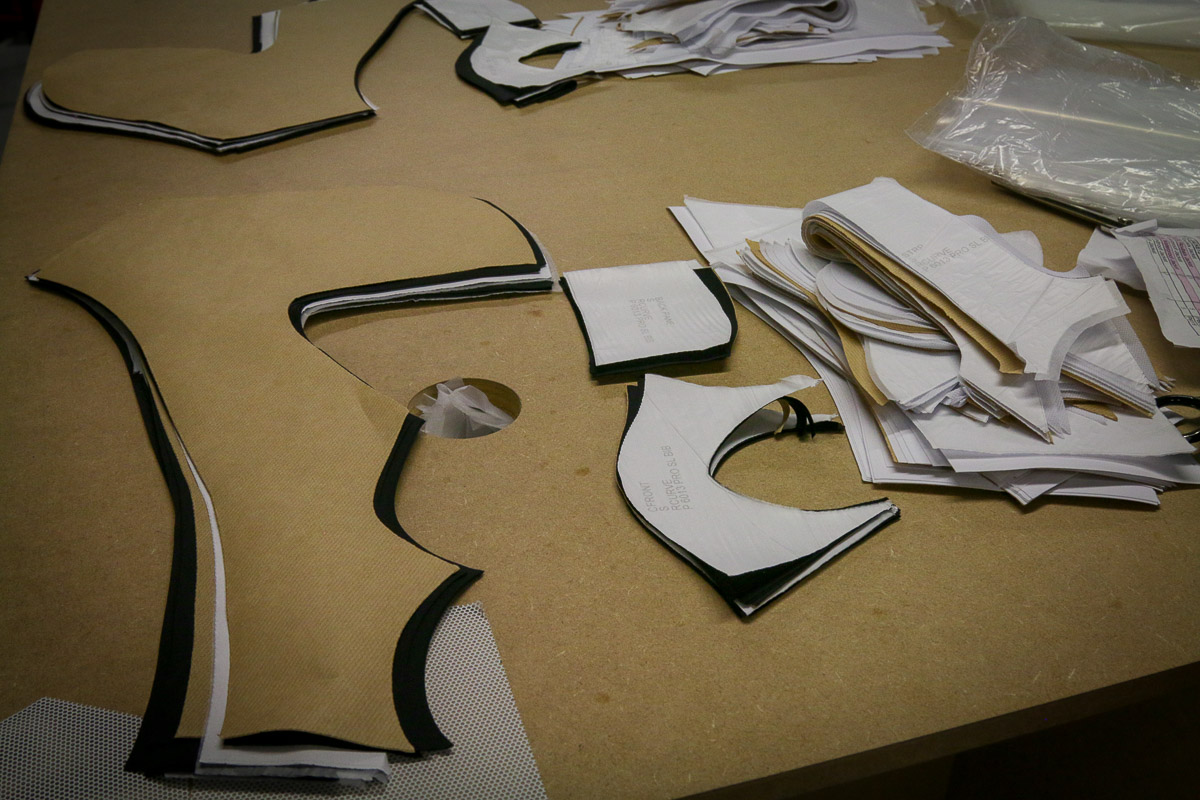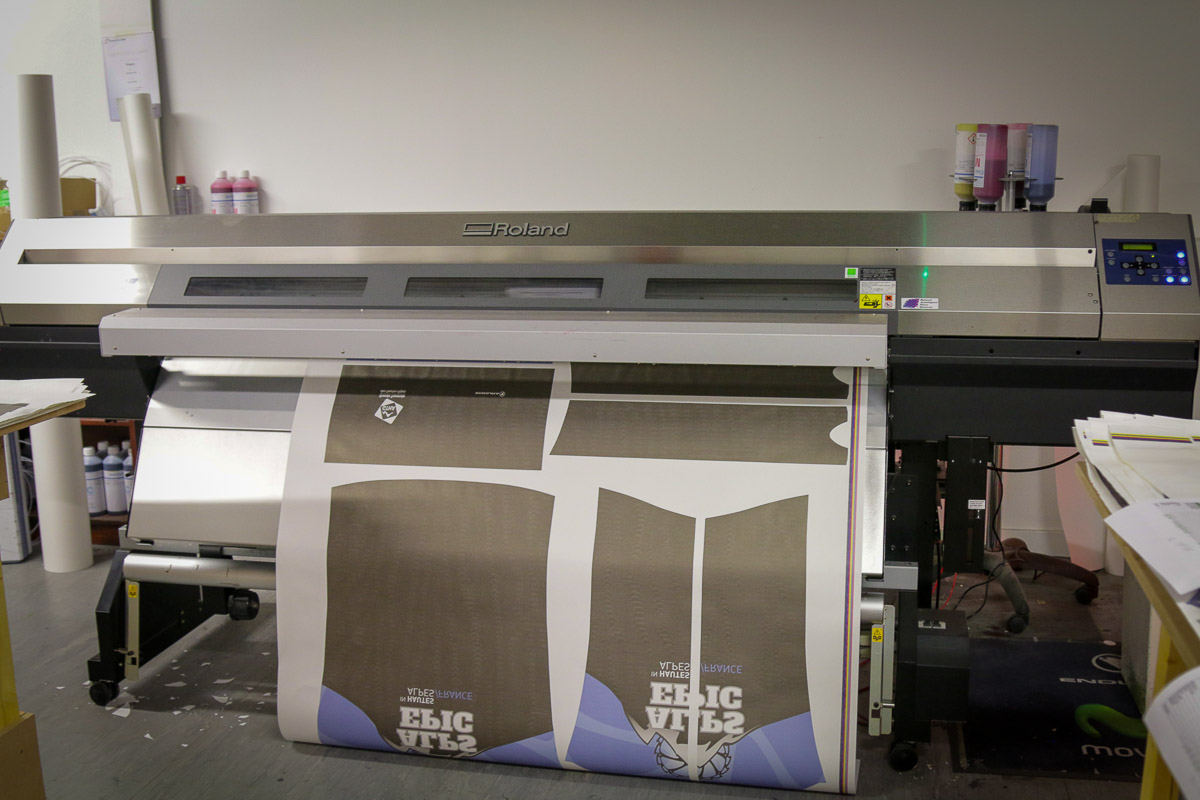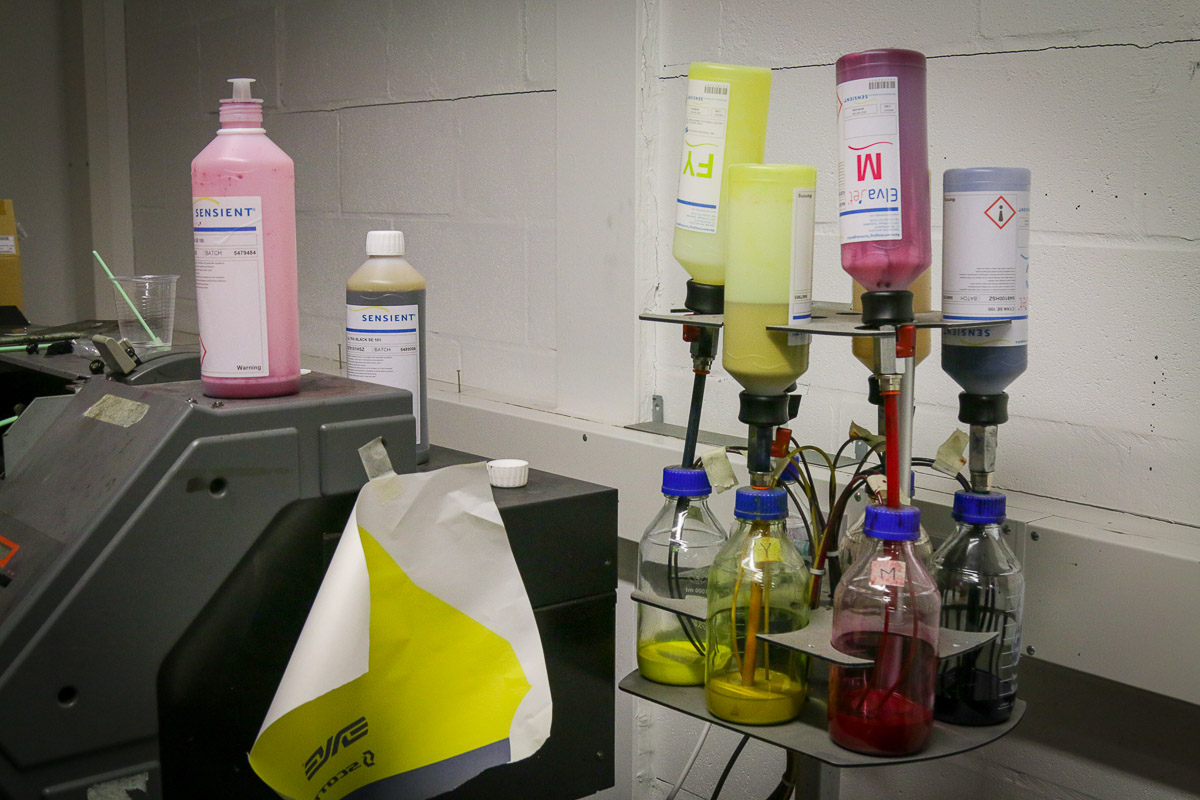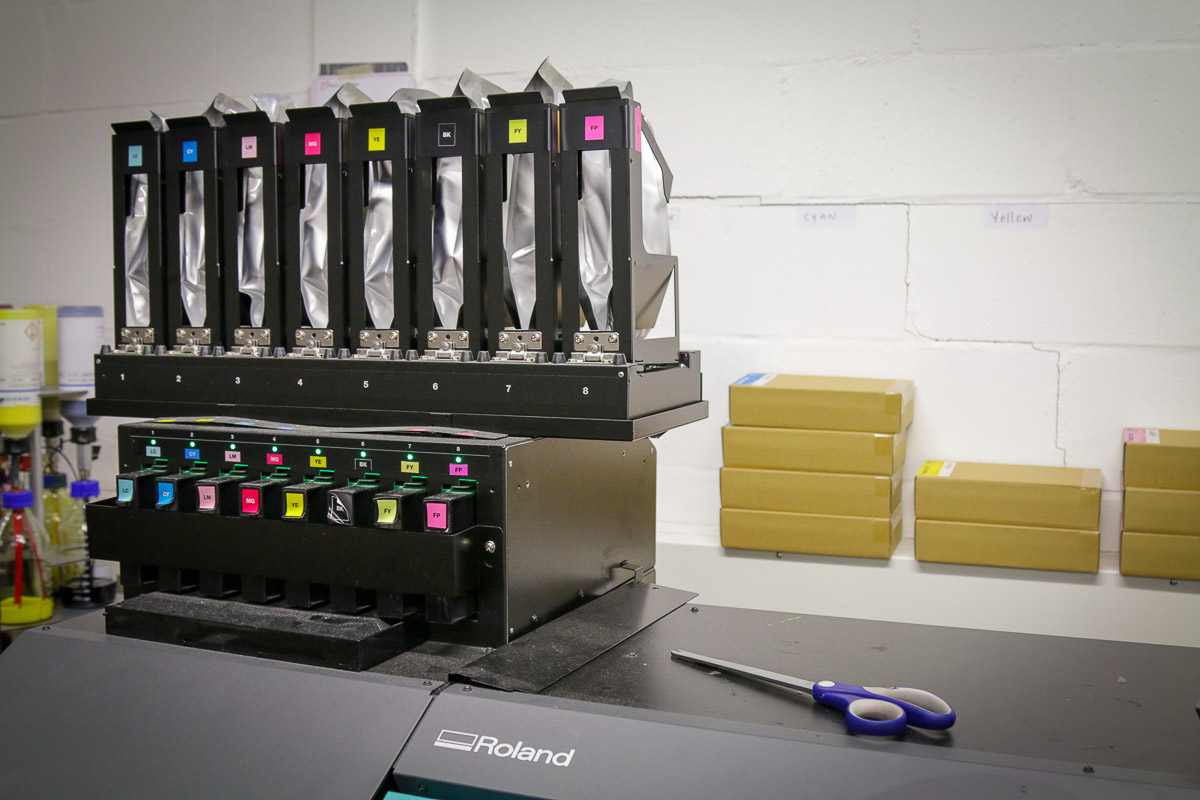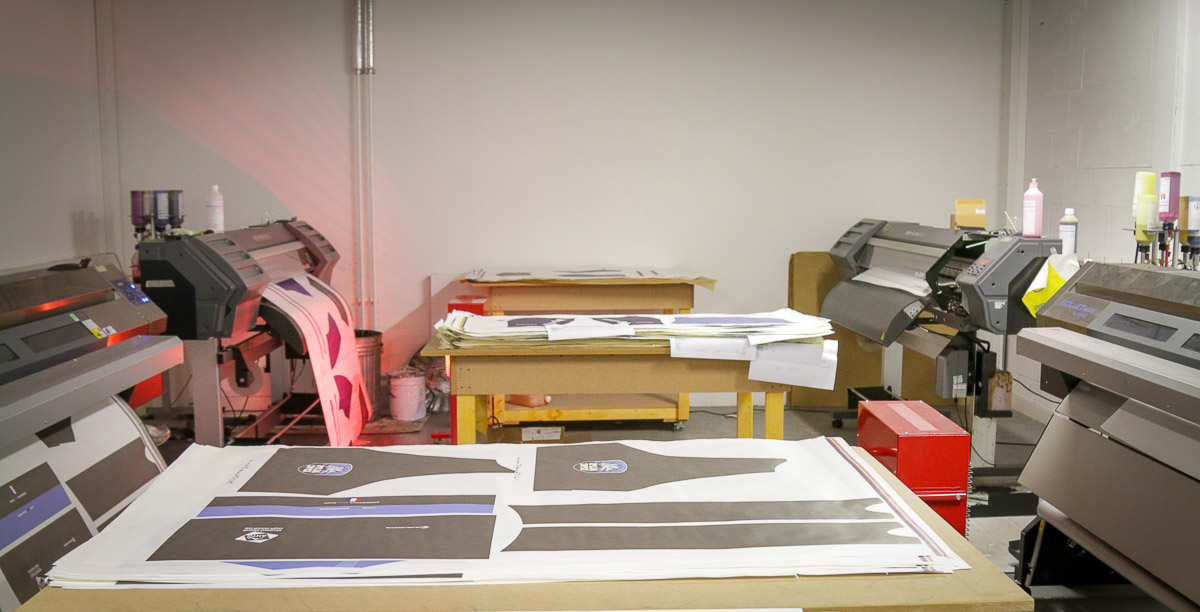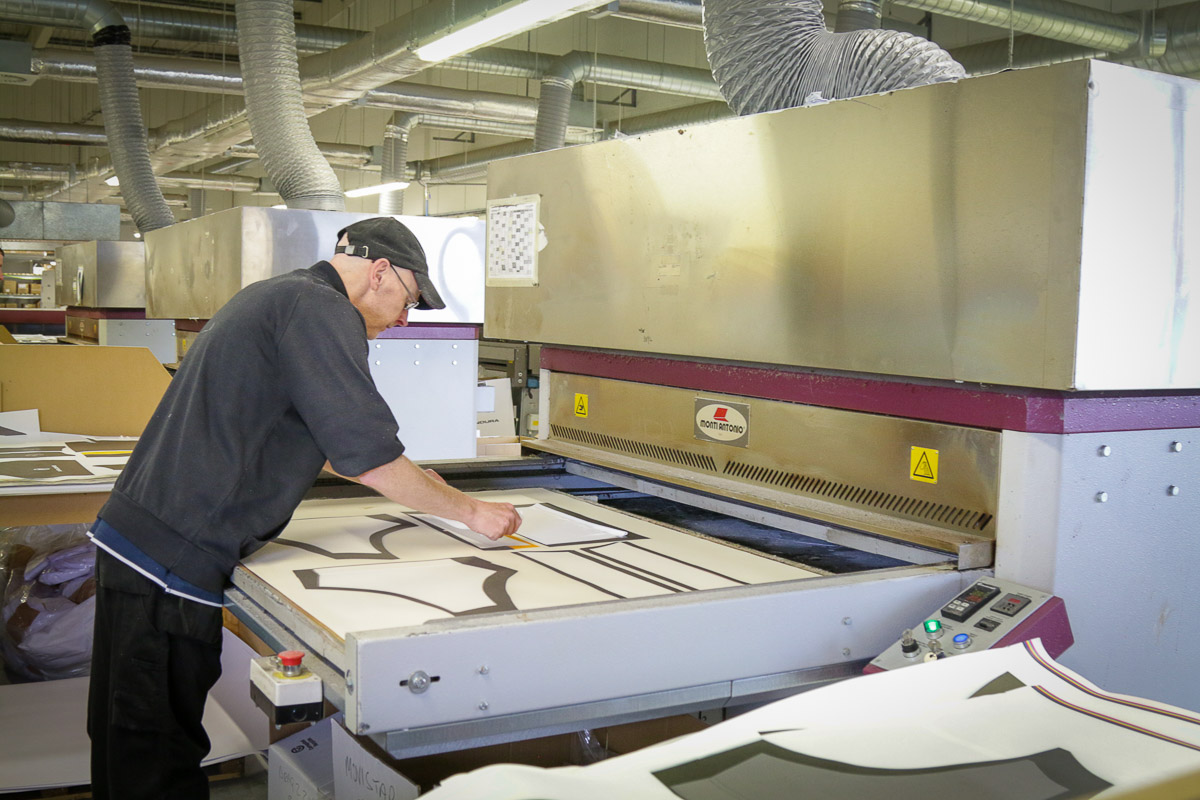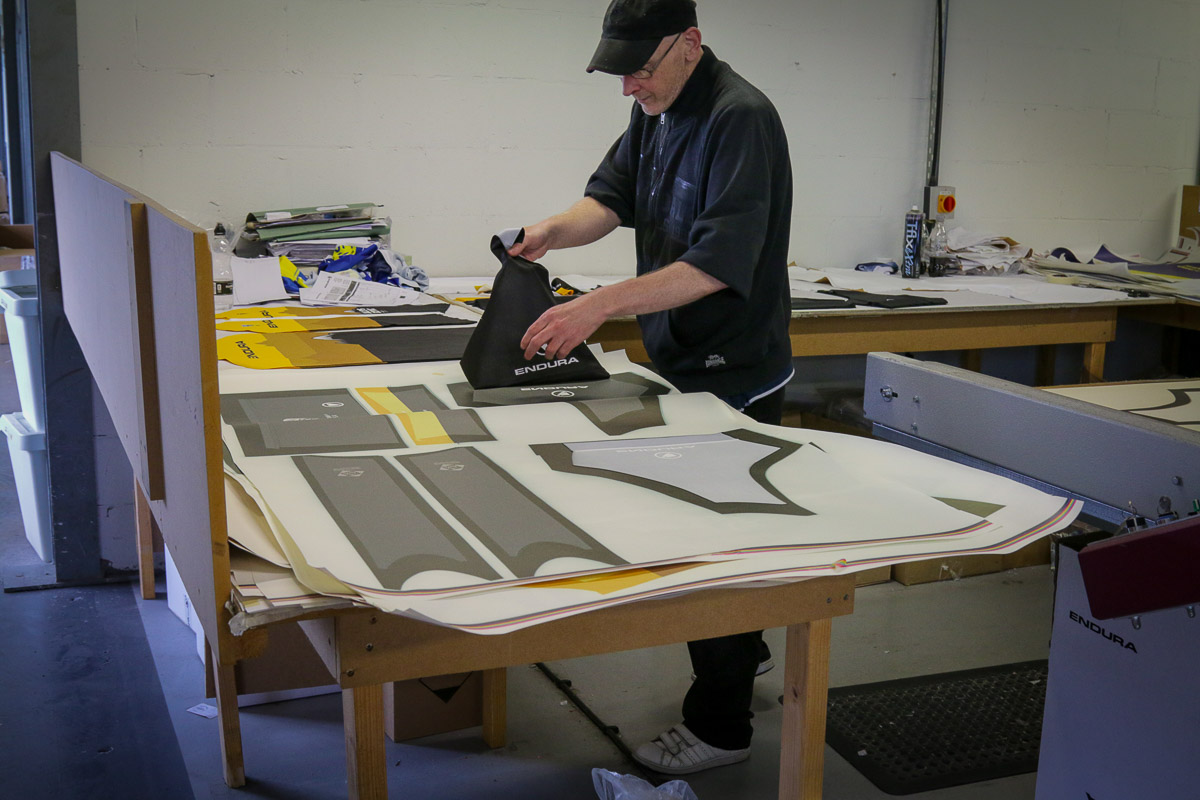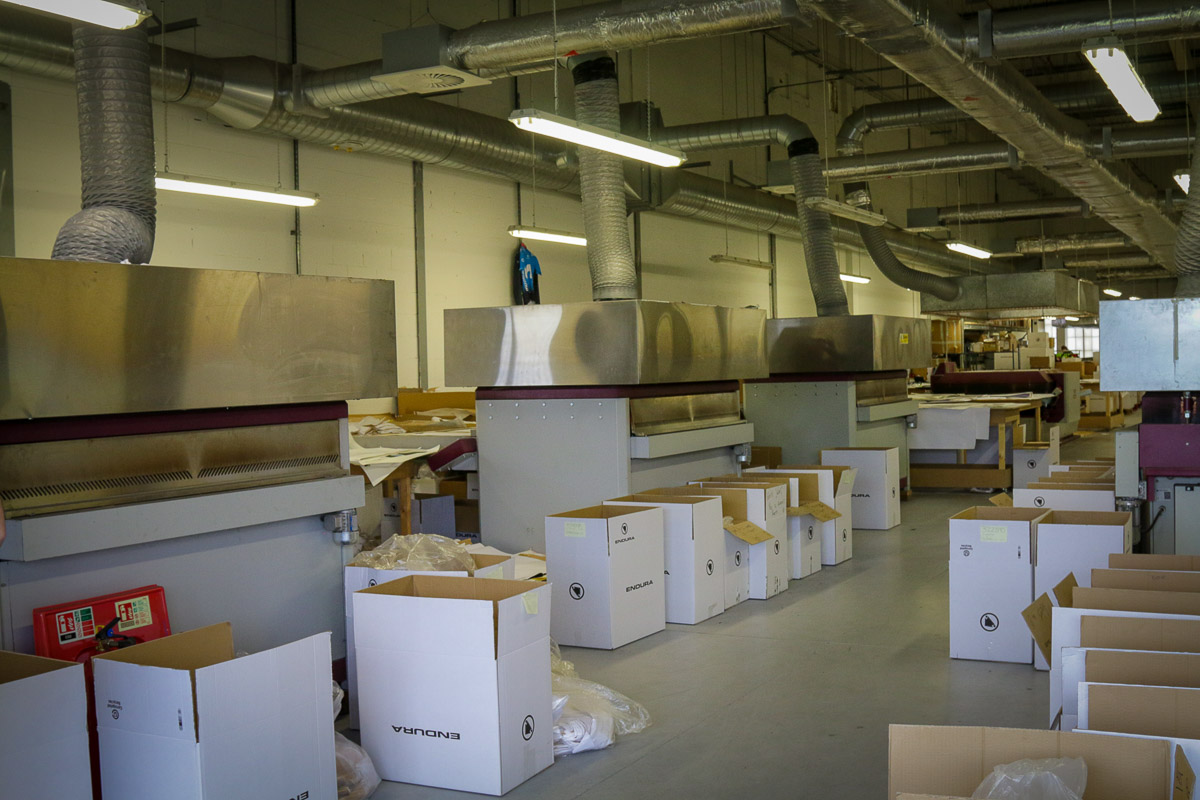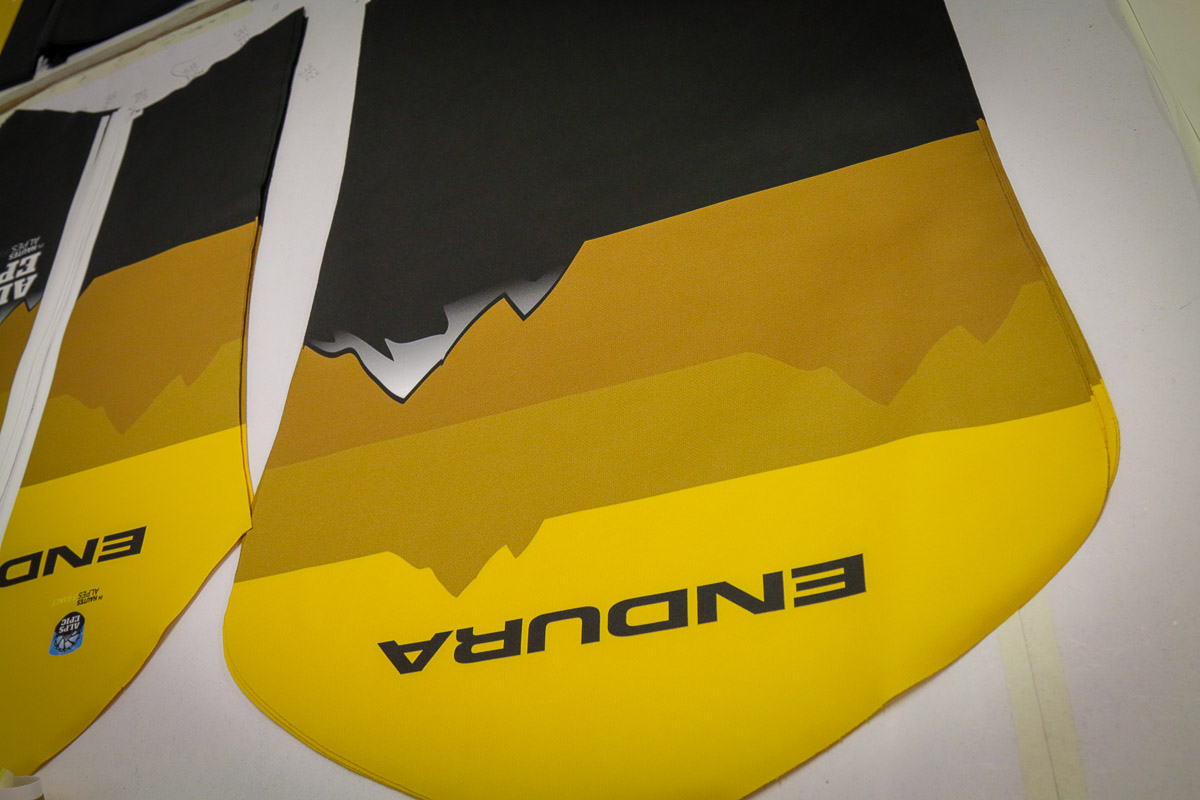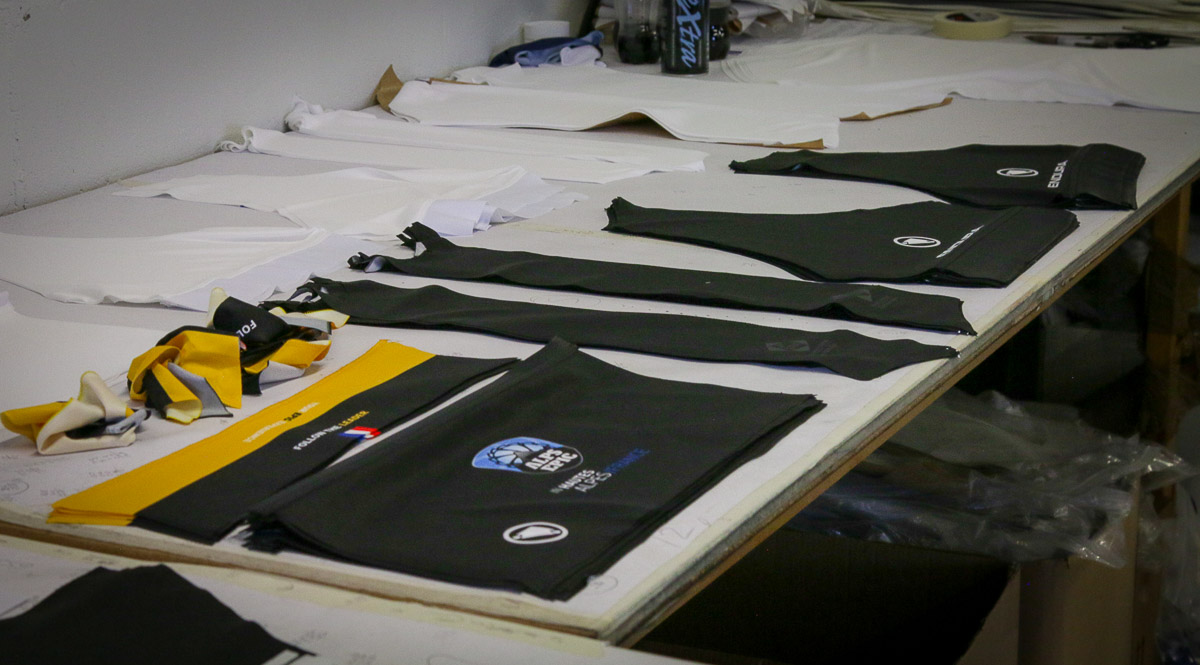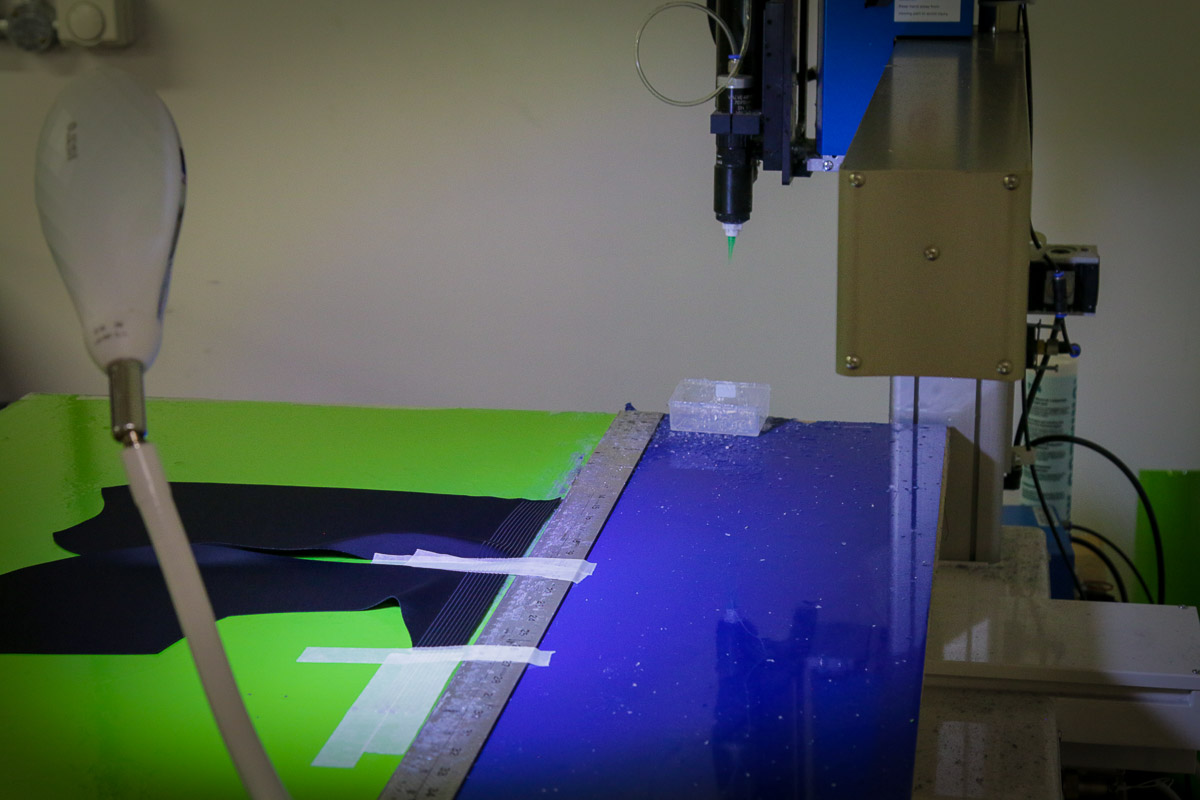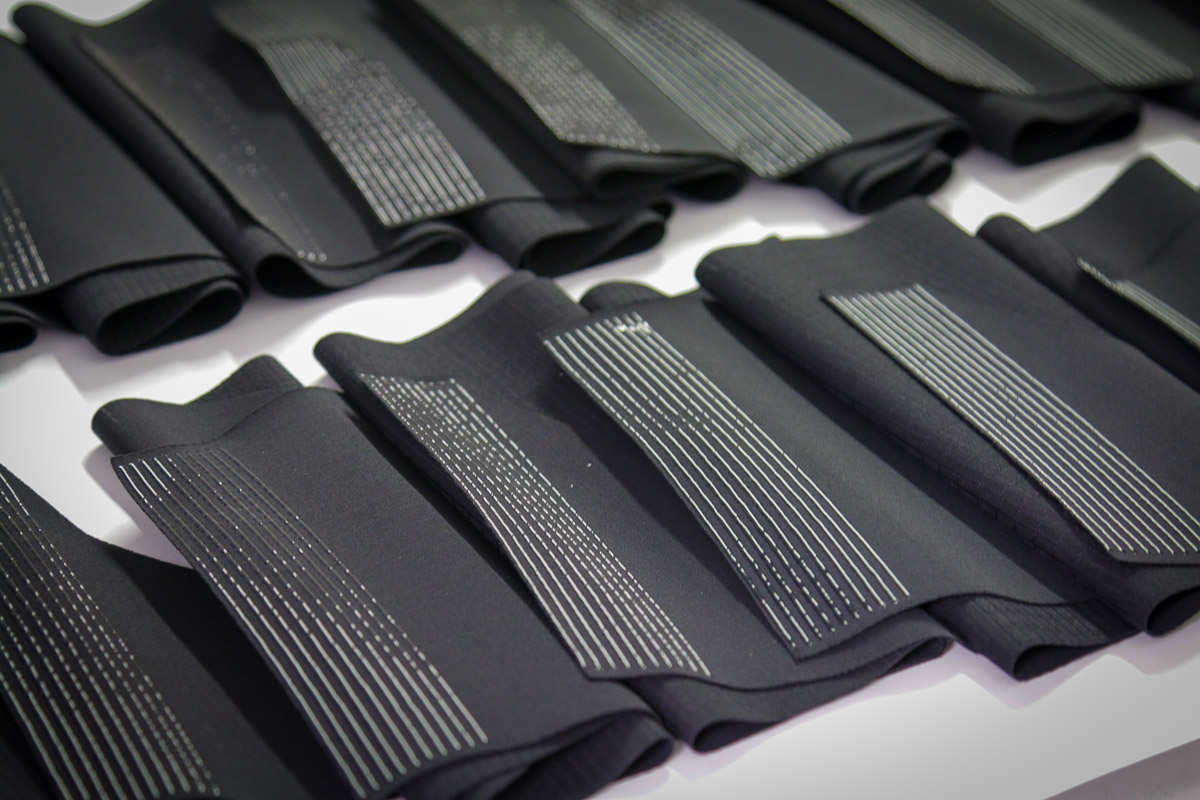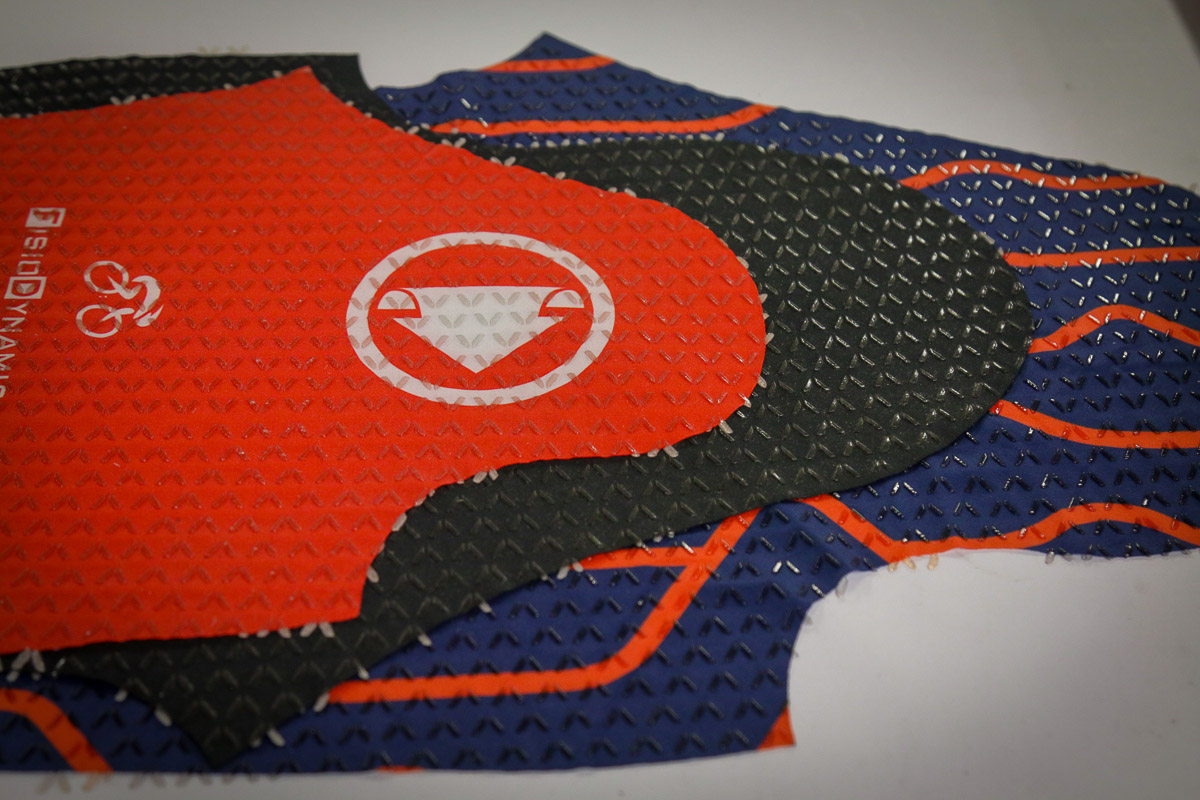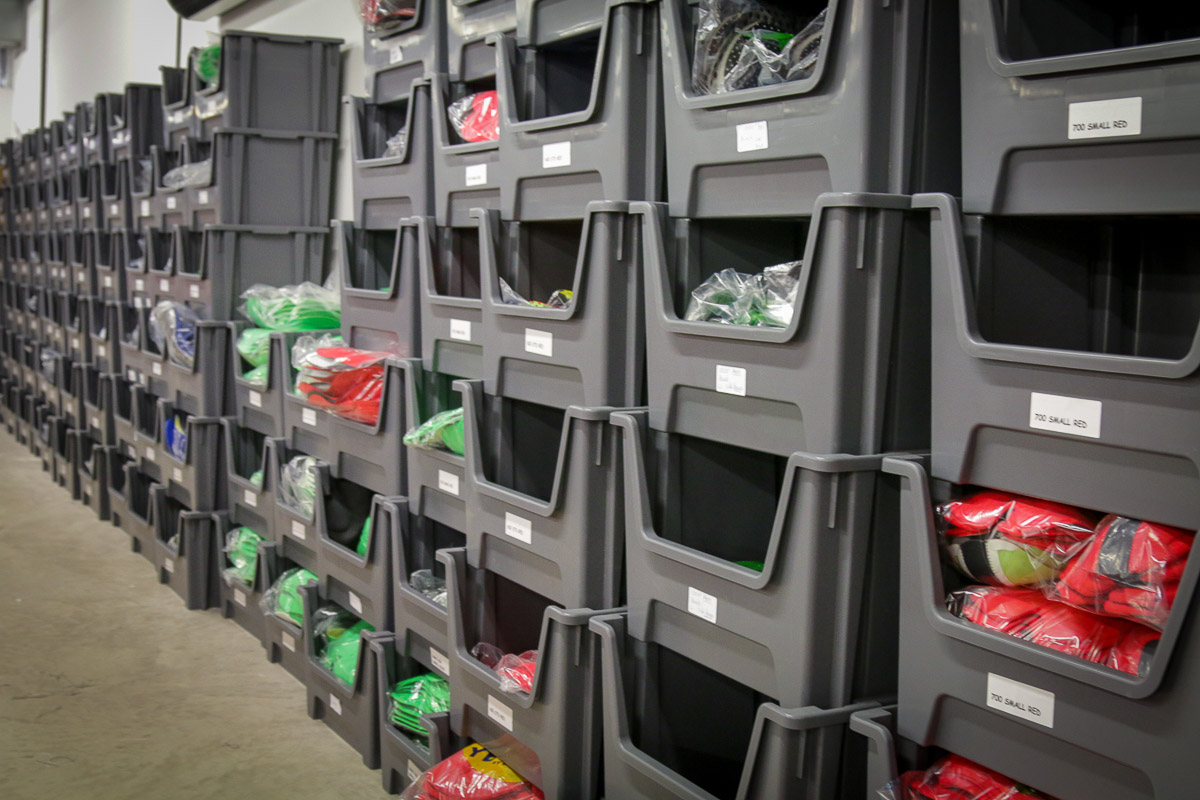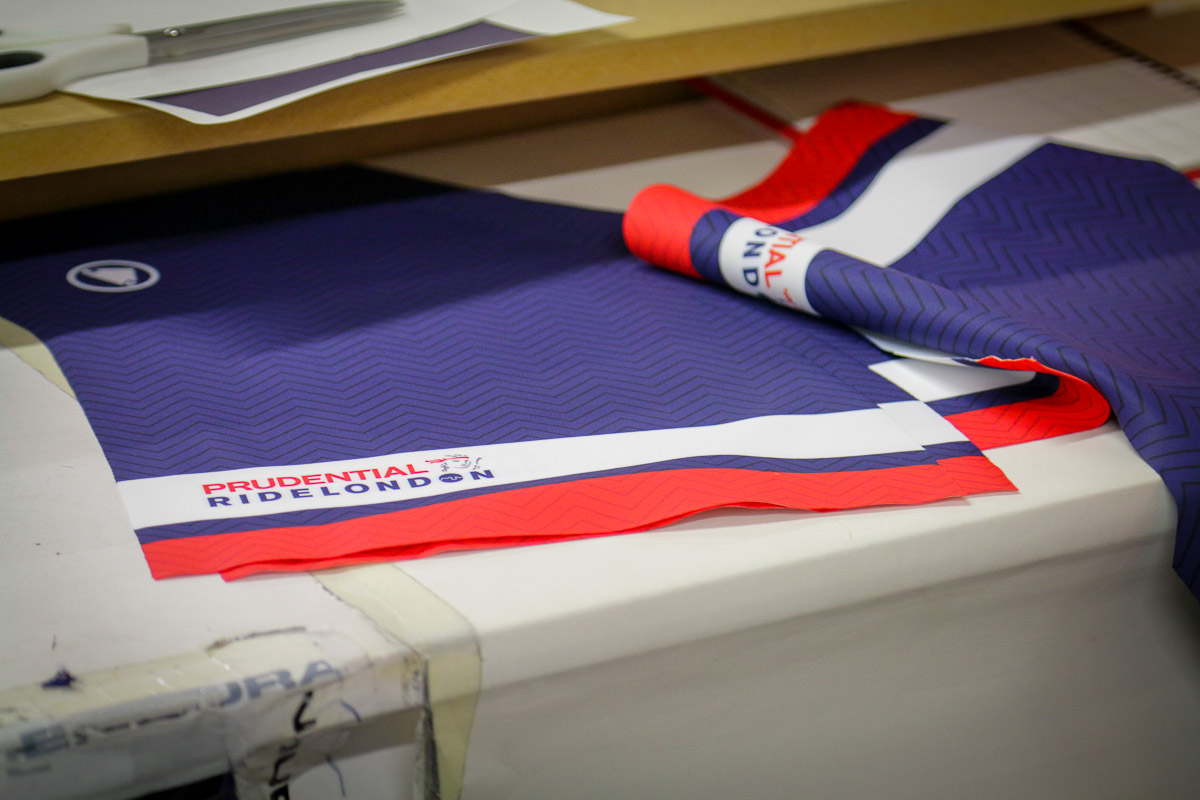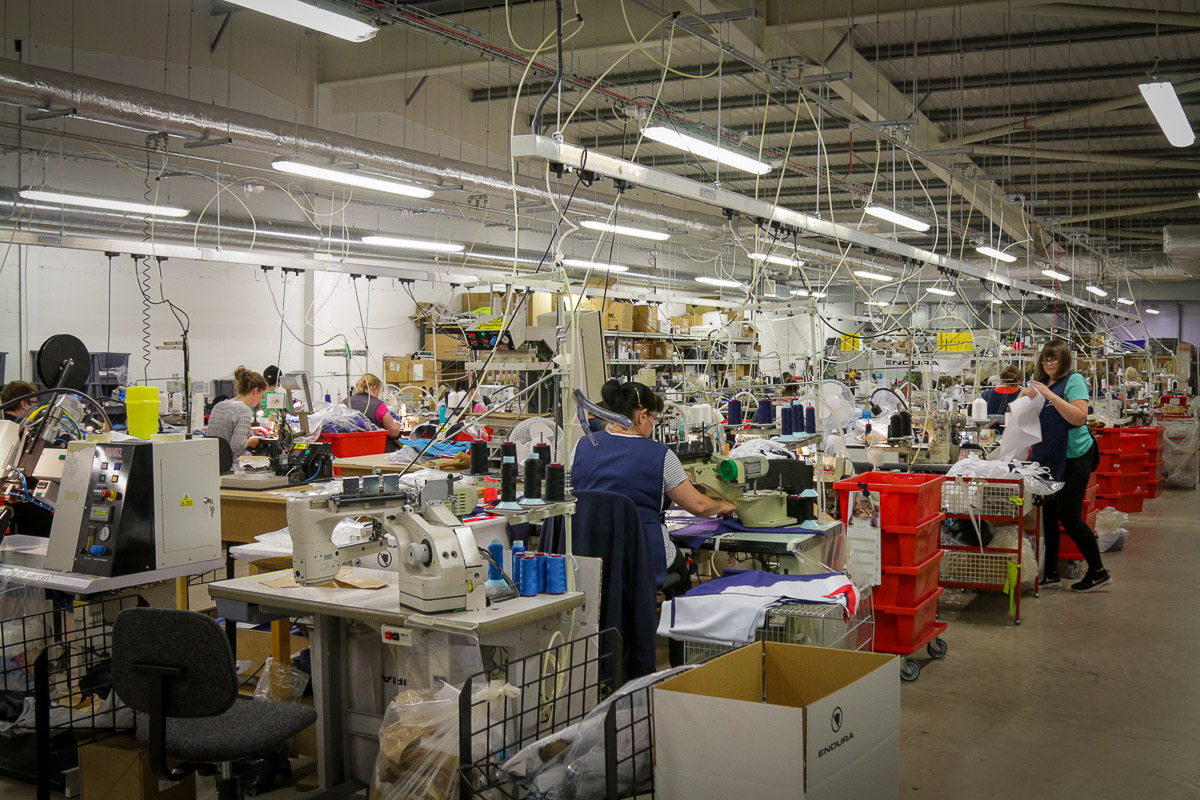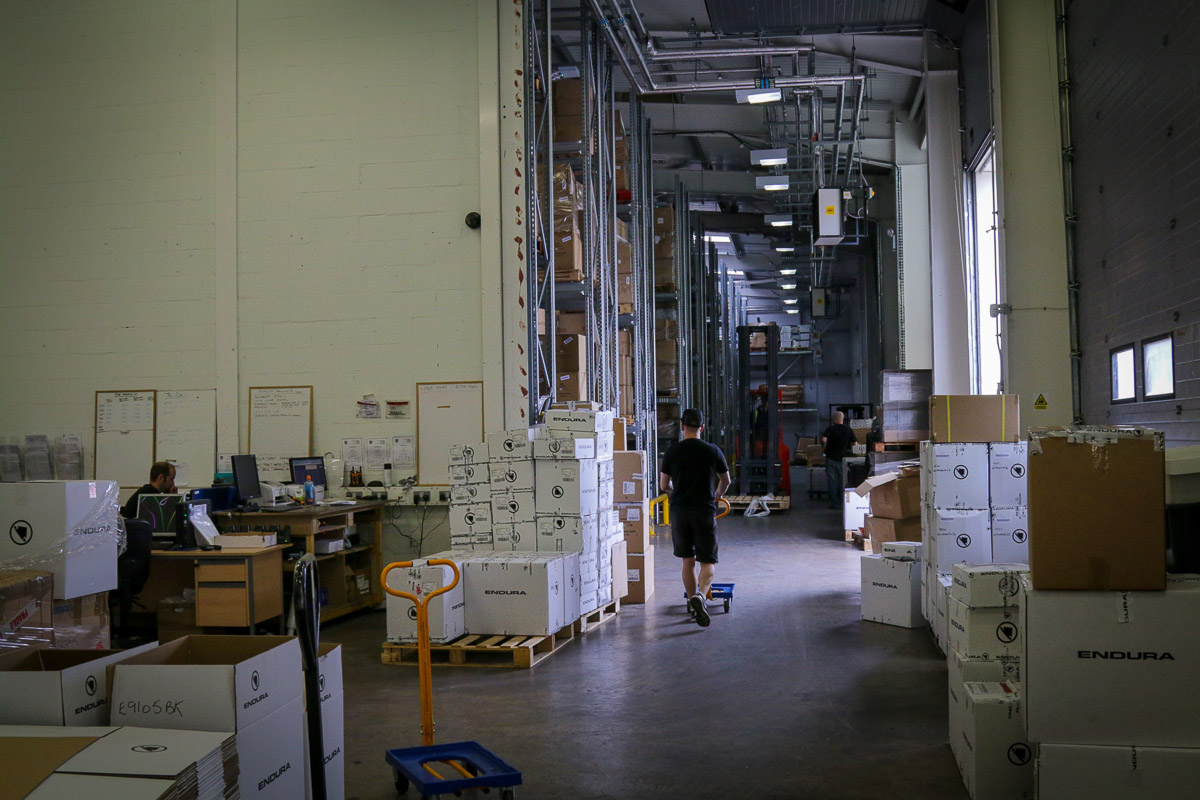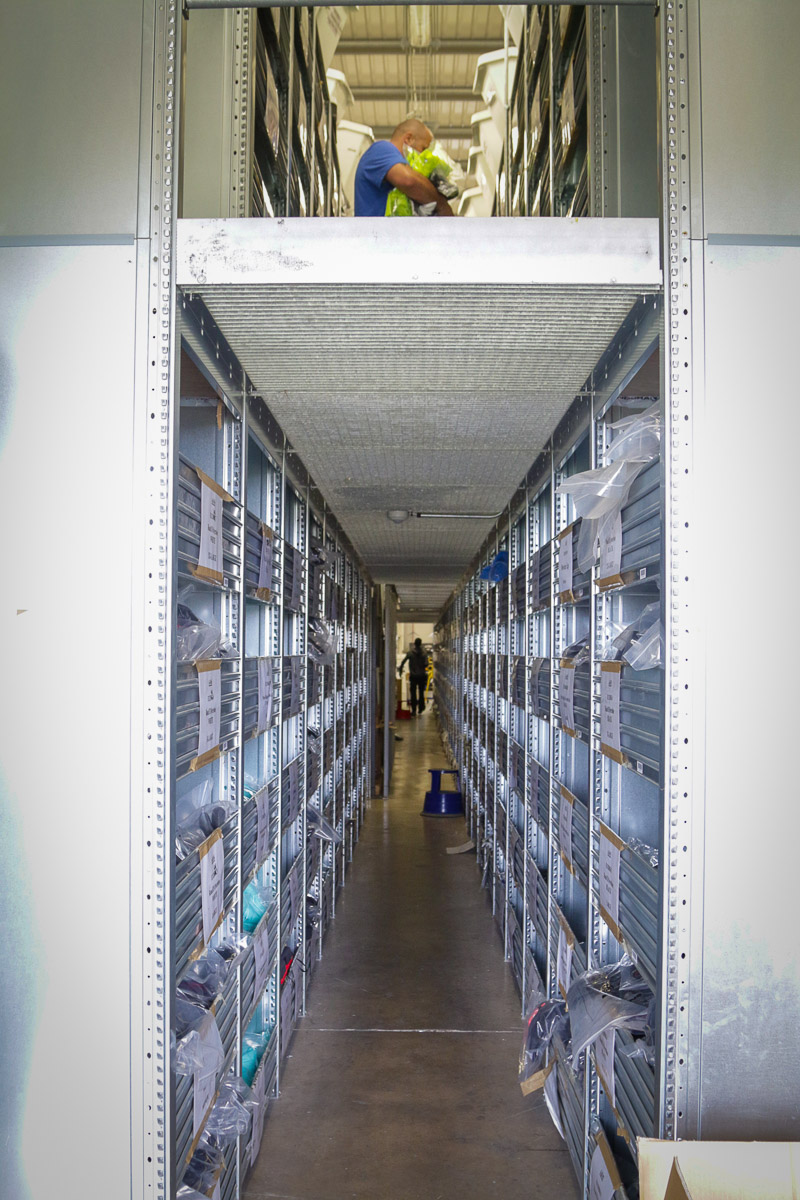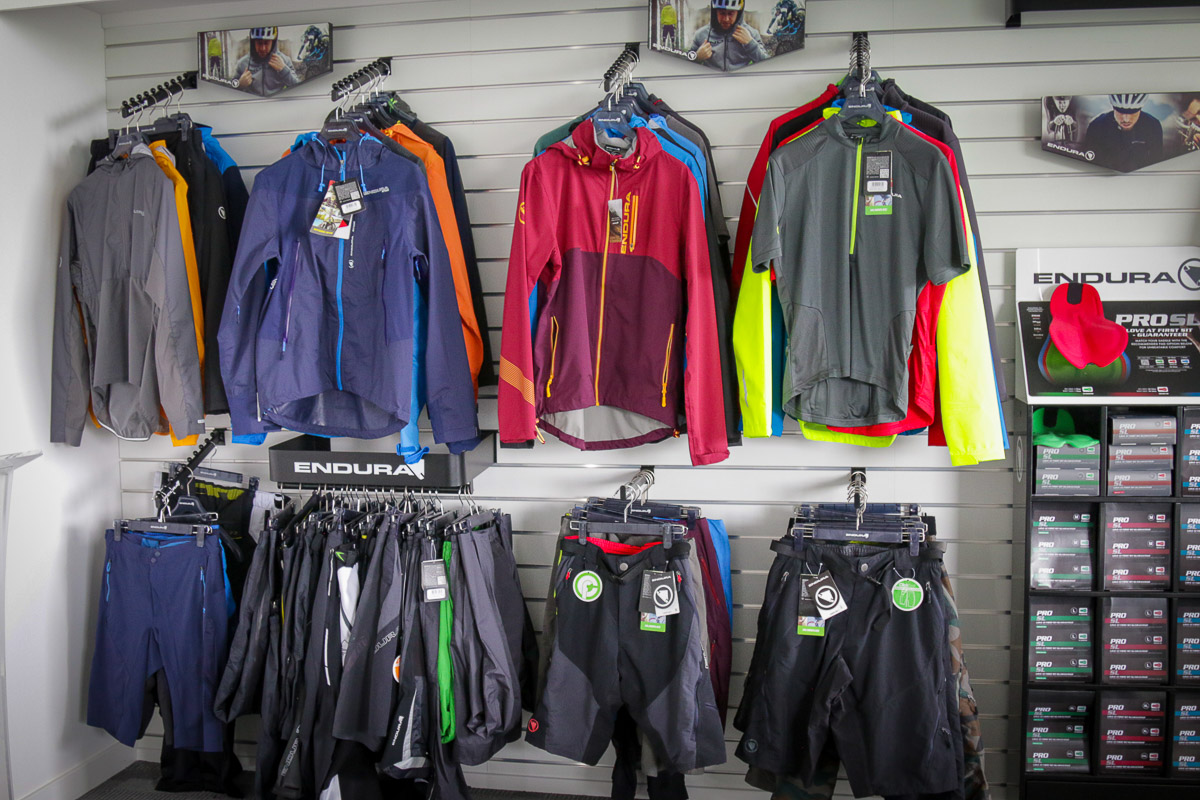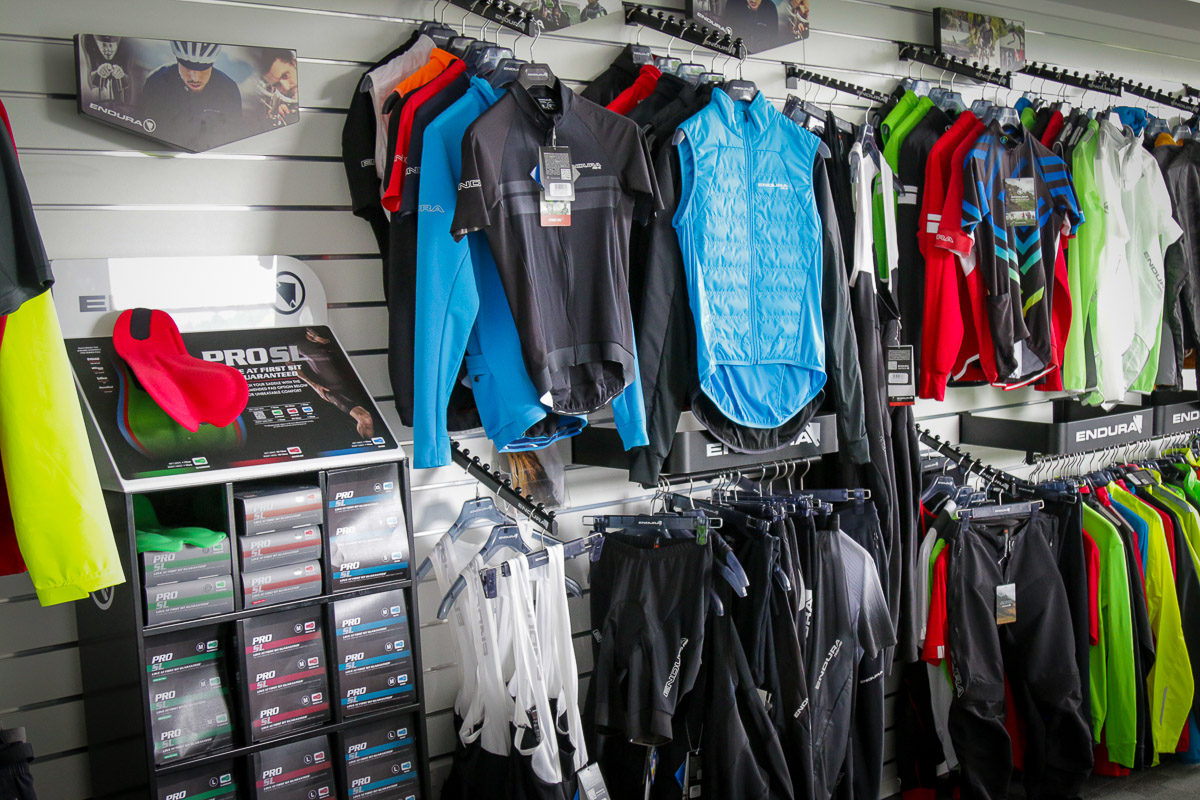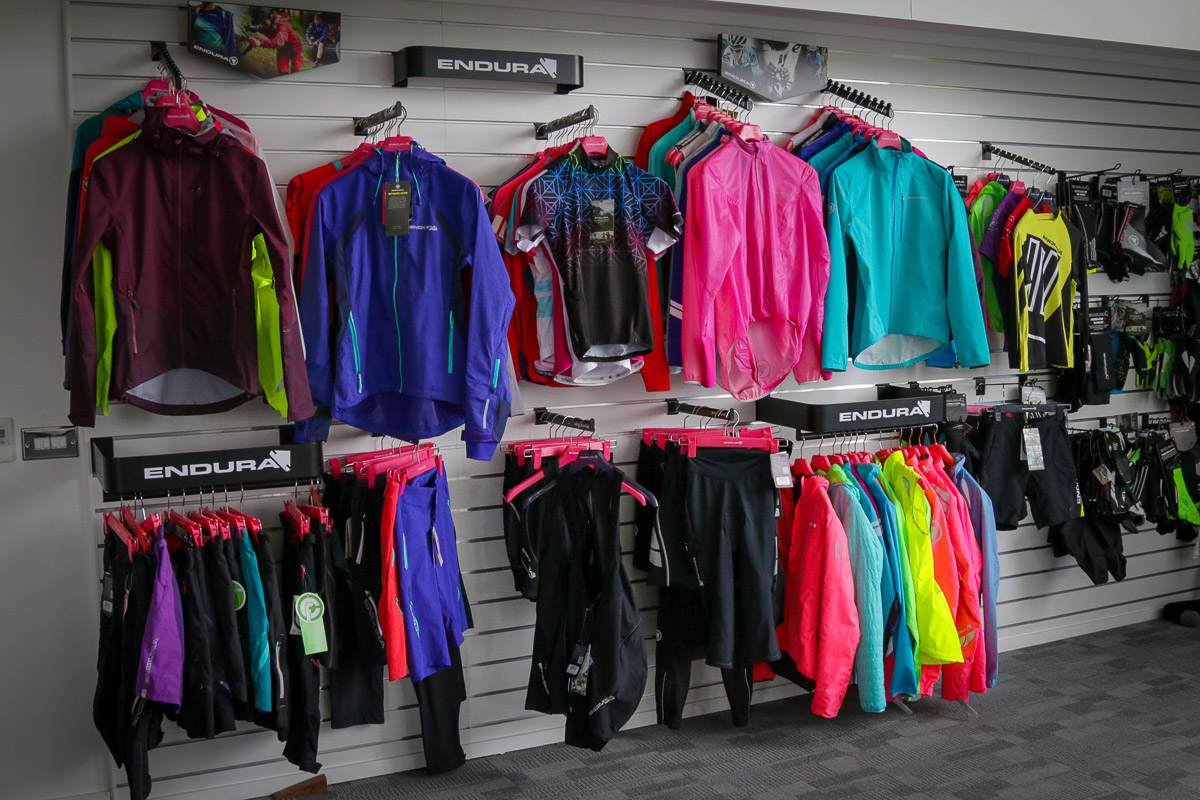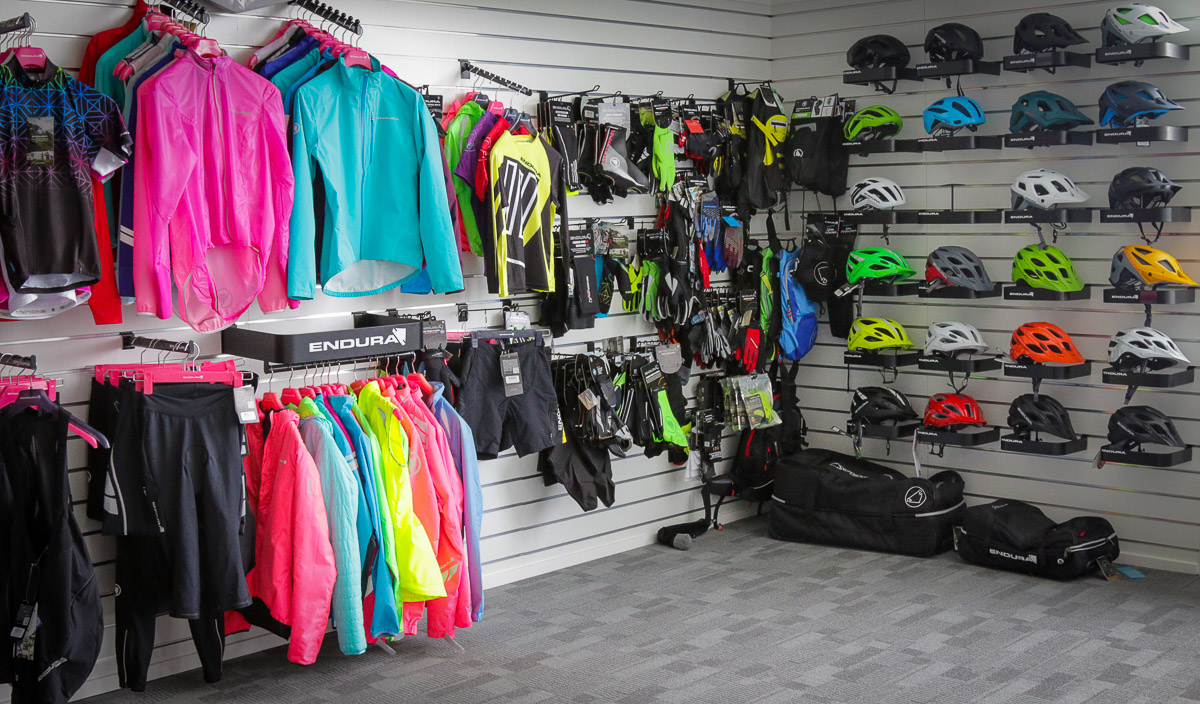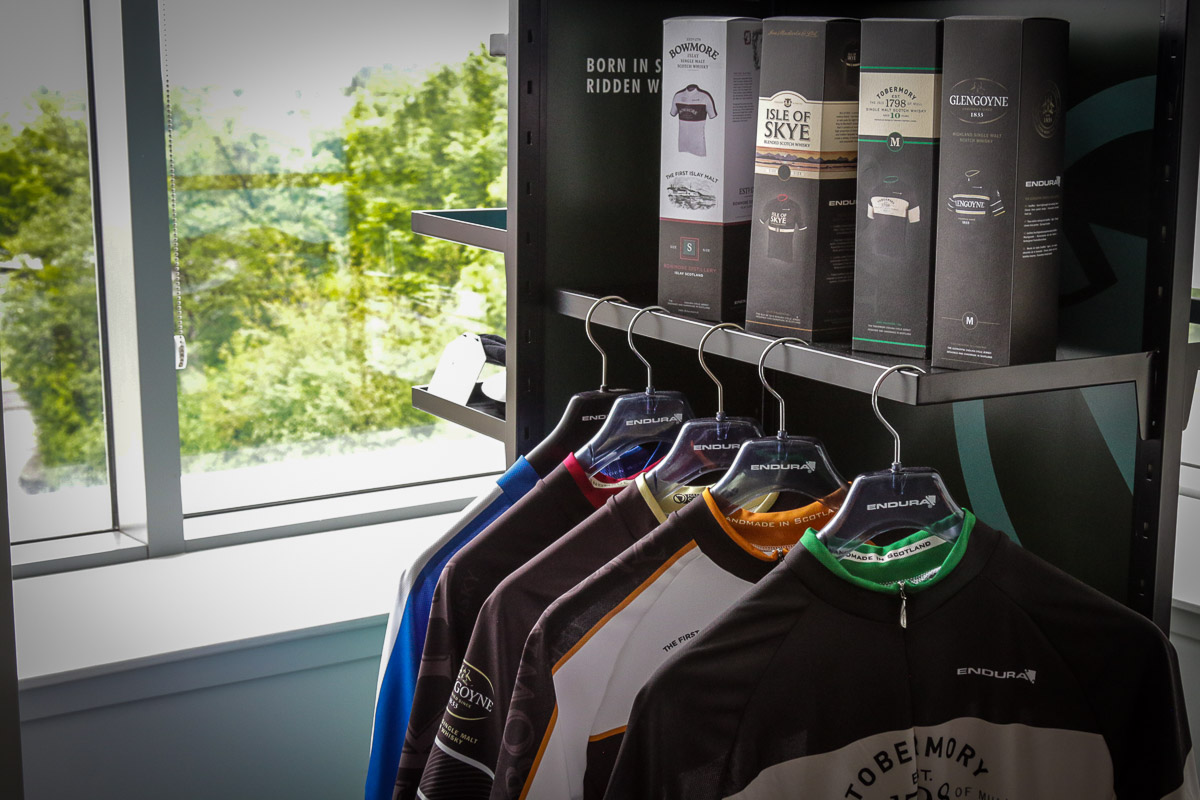Ever wonder how those full custom kits are made? Or maybe what digital sublimation printing means? That’s all in a day’s work at Endura’s headquarters in Livingston, Scotland. While the majority of their catalog is not made in house, the entirety of Endura’s custom line is made right here. That’s part of the reason they can turn around orders quickly and make one off pieces for their sponsored teams like Movistar, Trek Factory Racing DH, and Cervelo Bigla. Not only is the Livingston facility their hub of custom production, but this is also Endura’s world headquarters which makes for a pretty interesting tour…
Product Design
Immediately upon entry, you’re greeted with a visual history of the brand – and a simple sign above the door way “Where we make things.” Endura covers nearly all facets of cycling from road, to mountain, to commuting, and nearly everything in between so there’s a lot going on inside.
All of the future design and development takes place here with a massive space devoted to the employees responsible for upcoming products.
Of course, like any great company their employees are well taken care of.
Fabric Cutting
Custom clothing starts out here, as rolls of blank (mostly white) fabric. The fabric is then placed on a CAD cutting table that makes quick work of hundreds of predetermined fabric panels.
Compared to the old hand tools that were on display (and apparently still used in some competitors’ factories), the CAD tables are light years ahead.
Digital Printing
The other part of the equation is the digital print outs that create the custom part of the clothing. Endura has a full print shop with a number of massive printers that are responsible for printing out full size images of each piece of custom clothing. Since each print out is one time use, that requires a lot of ink and paper.
But as their processes improve, so does their technology. We’re told that this Roland printer is the first printer specifically for the sublimation process, and was the newest addition to the print shop.
In front of most of the printers was a heater to help the ink dry to prevent any smearing. Since most of these pieces start out as a white piece of fabric, the printing has to be more than edge to edge, for every panel.
Sublimation Process
To marry the ink and fabric, the individual panels of fabric are carefully laid out on the printed sheets and loaded into transfer presses. Here, immense pressure and heat turns the ink into a gas, which is then transferred directly to the fabric. The fabric then emerges from the press fully sublimated and ready for assembly.
Silicone Printing
Depending on the piece of clothing, it may get a trip to one of two silicone stations before assembly. For leg or arm grippers, an automated silicone applicator layers thin strips onto the fabric for comfortable yet firm grip. But for pieces like their new D2Z Aero Collection, they’re sent to another area for a special silicone printing process that builds up an aerodynamic pattern on the sleeves. This part of the process included some trade secrets so we weren’t allowed to capture the process, but we can show the results.
Hand Assembly
Once the pieces are all printed and ready to be assembled into finished clothing, they’re sent to the sewing shop where they are hand finished. Custom shorts can have any one of Endura’s chamois added so the walls were lined with crates of every style. The speed at which these ladies worked was incredible.
Warehouse
Of course, with fast production comes a lot of storage. Even though a lot of their other pieces aren’t produced in Scotland, this serves as their UK distribution center so there is a massive storage facility with multiple floors and rows upon rows of bins.
Showroom
But that’s not much of a surprise given how many items are in the full Endura catalog. And almost all of those are on display inside their showroom. Including the full line of Scotch Whisky themed jerseys, naturally.
